
1
©2008 Raj JainWashington University in St. Louis
Computer Networking and Internet Protocols:
Computer Networking and Internet Protocols:
A Comprehensive Introduction
A Comprehensive Introduction
Raj Jain
Professor of Computer Science and Engineering
Washington University in Saint Louis
http://www.cse.wustl.edu/~jain/
OSPF
IP Gigabit Ethernet
RSVP
MPLS
?
TCP

2
©2008 Raj JainWashington University in St. Louis
! IP: Addressing, forwarding, IPv6, TCP
! Ethernet
! Quality of Service (QoS): RSVP
! Multi-protocol Label Switching (MPLS)
! Route Discovery Protocols : RIP, OSPF, BGP
! Wireless networking
! Optical networking
Overview
Overview

3
©2008 Raj JainWashington University in St. Louis
1. Introduction to TCP/IP
1. Introduction to TCP/IP
! TCP/IP Reference Model
! Internet Protocol (IP)
! Forwarding an IP Datagram
! IP Datagram Format
! IPv6 Enhancements
! Domain Name Service
! TCP: Key Features
! User Datagram Protocol (UDP)

4
©2008 Raj JainWashington University in St. Louis
2. Ethernet
2. Ethernet
! Carrier Sense Multiple Access with Collision
Detection (CSMA/CD)
! IEEE 802 Address Format
! Interconnection Devices
! Distance-B/W Principle
! Gigabit Ethernet
! Spanning Tree
! 10Gbps Ethernet PHYs
! Metro Ethernet Services

5
©2008 Raj JainWashington University in St. Louis
3. Quality of Service (QoS)
3. Quality of Service (QoS)
! ATM QoS and Issues
! Integrated Services and RSVP
! Differentiated Services:
Expedited and Assured Forwarding
! Subnet Bandwidth Manager (SBM)
! COPS Protocol for Policy
! IEEE 802.1D Model

6
©2008 Raj JainWashington University in St. Louis
4. MPLS
4. MPLS
! Routing vs Switching
! Label Stacks
! Label Distribution Protocol (LDP)
! RSVP Extensions
! Traffic Engineering
! Traffic Trunks
! Traffic Engineering Extensions to OSPF and IS-IS

7
©2008 Raj JainWashington University in St. Louis
5. Routing Protocols
5. Routing Protocols
! Building Routing Tables
! Routing Information Protocol Version 1 (RIP V1)
! RIP V2
! OSPF
! BGP and IDRP.

8
©2008 Raj JainWashington University in St. Louis
6. Wireless Networks
6. Wireless Networks
! Recent advances in wireless PHY
! WiMAX Broadband Wireless Access
! Cellular Telephony Generations
! WiMAX vs LTE
! 4G: IMT-Advanced
! 700 MHz

9
©2008 Raj JainWashington University in St. Louis
7. Optical Networks
7. Optical Networks
! Recent DWDM Records
! OEO vs OOO Switches
! More Wavelengths
! Ultra-Long Haul Transmission
! Passive Optical Networks
! IP over DWDM: MPλS, GMPLS
! Free Space Optical Comm
! Optical Packet Switching

10
©2008 Raj JainWashington University in St. Louis
Day 1: Schedule (Tentative)
Day 1: Schedule (Tentative)
! 10:00-10:15 Course Introduction
! 10:15-11:30 Internet Protocol (IP), IPv6
! 11:30-11:45 Coffee Break
! 11:45-1:15 DNS, TCP
! 1:15-2:00 Lunch Break
! 2:00-3:15 Metro Ethernet
! 3:15-3:30 Coffee Break
! 3:30-5:00 Quality of Service

11
©2008 Raj JainWashington University in St. Louis
Day 2: Schedule (Tentative)
Day 2: Schedule (Tentative)
! 10:00-11:00 MPLS, MPLS-TE
! 11:00-11:15 Coffee Break
! 11:15-12:15 Routing Protocols
! 12:15-1:00 Lunch Break
! 1:00-2:15 Wireless Networking
! 2:15-2:30 Coffee Break
! 2:30-4:00 Optical Networking

12
©2008 Raj JainWashington University in St. Louis
Pre
Pre
-
-
Test
Test
! Check if you know the difference between:
" Private addresses and public addresses
" Class C vs Class A addresses
" Extension header vs base header
" Distance vector vs link state routing
" Inter-domain vs intra-domain routing
" Universal vs multicast bit
" Spanning tree vs IS-IS
" UBR vs ABR
" DiffServ vs IntServ
" RSVP vs LDP
" CDMA vs OFDMA
" OOO vs OEO optical switching
" MPLS vs GMPLS
" Routing vs switching

13
©2008 Raj JainWashington University in St. Louis
Pre
Pre
-
-
Test (Cont)
Test (Cont)
! If you checked more than 7 items,
you may not gain much from this course.
! If you checked only a few or none, don’t worry. This
course will cover all this and much more.

14
©2008 Raj JainWashington University in St. Louis
Disclaimers
Disclaimers
! This course covers a lot of topics
! These topics are normally taught in 3 quarter-courses
! Fundamental and basics will be covered
! You will need to read RFC’s for detailed info
! This course has been designed specifically for you.
Please feel free to ask questions, make comments,
agree or disagree.
! More discussion ⇒ More relevant topics

15
©2008 Raj JainWashington University in St. Louis
Student Questionnaire
Student Questionnaire
! Name (Optional): _________________________
! Computer networking courses taken:
________________________________________________
! Telecom Networking background:
_________________________________________________
! What do you want covered in this course:
_________________________________________________
_________________________________________________
_________________________________________________
_________________________________________________

16
©2008 Raj JainWashington University in St. Louis
Introduction to
Introduction to
TCP/IP
TCP/IP
Raj Jain
Professor of Computer Science and Engineering
Washington University in Saint Louis
Saint Louis, MO, USA
http://www.cse.wustl.edu/~jain/

17
©2008 Raj JainWashington University in St. Louis
1. TCP/IP Reference Model
2. Internet Protocol (IP)
3. Forwarding an IP Datagram
4. IP Datagram Format
5. IPv6 Enhancements
6. Domain Name Service
7. TCP: Key Features
8. User Datagram Protocol (UDP)
Overview
Overview

18
©2008 Raj JainWashington University in St. Louis
TCP/IP Reference Model
TCP/IP Reference Model
! TCP = Transport Control Protocol
! IP = Internet Protocol (Routing)
Application
Presentation
Session
Transport
Network
Datalink
Physical
Application
Transport
Internetwork
Host to
Network
FTP
TCP
IP
Ether
net
Telnet HTTP
UDP
Packet
Radio
Point-to-
Point
TCP/IP Ref Model OSI Ref ModelTCP/IP Protocols

19
©2008 Raj JainWashington University in St. Louis
Layered Packet Format
Layered Packet Format
! Nth layer control info is
passed as N-1th layer
data.
FTP Data
FTP
Header
TCP Data
TCP
Header
IP Data
IP
Header
Ethernet Data
Ethernet
Header
Ethernet
Trailer

20
©2008 Raj JainWashington University in St. Louis
Internetworking
Internetworking
! Inter-network = Collection of networks
Connected via routers
Network
Network
Network
Network
Router
Router

21
©2008 Raj JainWashington University in St. Louis
Internet = Collection of Networks
Internet = Collection of Networks
! Any computer can talk to any other computer
Net 2
Net 1
Net 3
Net 4

22
©2008 Raj JainWashington University in St. Louis
Internet Protocol (IP)
Internet Protocol (IP)
! Layer 3 protocol that forwards datagrams across
internet
! Uses routing tables prepared by routing protocols,
e.g., Open Shortest Path First (OSPF),
Routing Information Protocol (RIP)
! Connectionless service
vs connection-oriented (circuits)

23
©2008 Raj JainWashington University in St. Louis
IP Address
IP Address
! Class A:
(1+3 bytes)
Network Local0
71 24 bits
Network Local10
142 16 bits
! Class B:
(2+2 bytes)
Network Local110
213 8 bits
! Class C:
(3+1 bytes)
! Local = Subnet + Host (Variable length)
Router Router
Subnet
Host Group (Multicast)1110
284 bits
! Class D:

24
©2008 Raj JainWashington University in St. Louis
Subnetting
Subnetting
! All hosts on a subnetwork have the same prefix.
Position of the prefix is indicated by a “subnet mask”
! Example: First 23 bits = subnet
Address: 10010100 10101000 00010000 11110001
Mask: 11111111 11111111 11111110 00000000
.AND. 10010100 10101000 00010000 00000000
Subnet 1 Subnet 2 Subnet n
Network

25
©2008 Raj JainWashington University in St. Louis
An Addressing Example
An Addressing Example
! All hosts on a network have the same network prefix
Fig 14.6
128.10
128.10
192.5.48
192.5.48
128.10.0.1
Router
Router
Router
Router
128.211
128.211
10
10
Router
Router
128.10.0.2 128.211.6.115
192.5.48.3
10.0.0.37 10.0.0.49

26
©2008 Raj JainWashington University in St. Louis
! All-0 host suffix ⇒ Network Address
! All-0s ⇒ This computer
(In some old networks: 0.0.0.0 = broadcast. Not used.)
! All-0s network ⇒ This network.
E.g., 0.0.0.2 = Host 2 on this network
! All-1 host suffix ⇒ All hosts on the destination net (directed
broadcast),
All-0 host suffix ⇒ Berkeley directed broadcast address
! All-1s ⇒ All hosts on this net (limited broadcast)
⇒ Subnet number cannot be all 1
! 127.*.*.* ⇒ Looback through IP layer
Special IP Addresses
Special IP Addresses

27
©2008 Raj JainWashington University in St. Louis
Private Addresses
Private Addresses
! Any organization can use these inside their network
Can’t go on the internet. [RFC 1918]
! 10.0.0.0 - 10.255.255.255 (10/8 prefix)
! 172.16.0.0 - 172.31.255.255 (172.16/12 prefix)
! 192.168.0.0 - 192.168.255.255 (192.168/16 prefix)
Network
Address
Translator
Private
Network
Internet
Private
Addresses
Public
Addresses

28
©2008 Raj JainWashington University in St. Louis
Forwarding an IP Datagram
Forwarding an IP Datagram
! Delivers datagrams to destination network (subnet)
! Routers maintain a “routing table” of “next hops”
! Next Hop field does not appear in the datagram
Table at R2:
Fig 16.2
Net 1 Forward to R1
Net 2 Deliver Direct
Net 3 Deliver Direct
Net 4 Forward to R3
Net 1
Net 1
R1
R1
Net 2
Net 2
R2
R2
Net 3
Net 3
R3
R3
Net 4
Net 4
Destination Next Hop
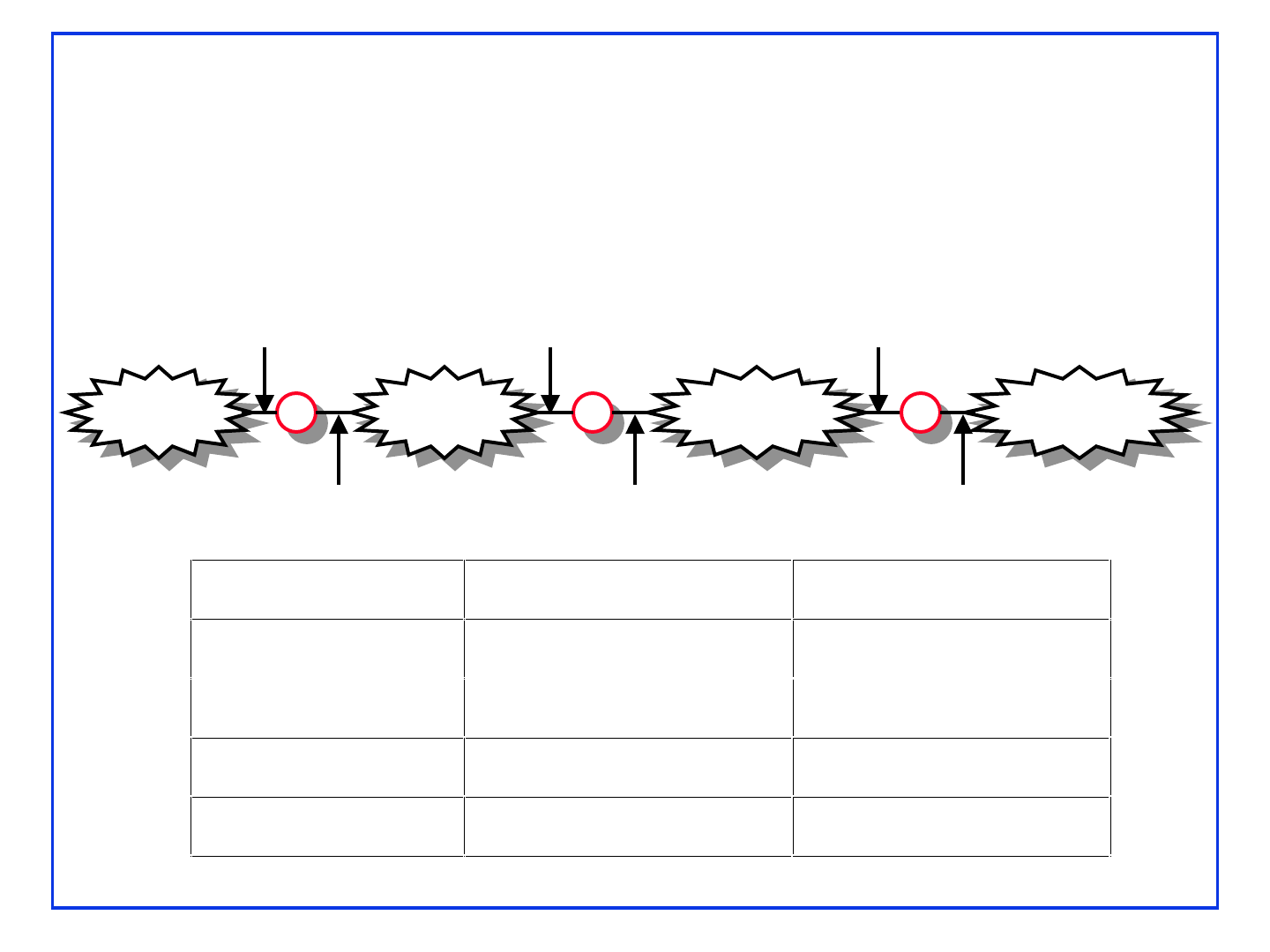
29
©2008 Raj JainWashington University in St. Louis
IP Addresses and Routing Table Entries
IP Addresses and Routing Table Entries
! IF ((Mask[i] & Destination Addr) = = Destination[i])
Forward to NextHop[i]
Destination Mask Next Hop
30.0.0.0 255.0.0.0 40.0.0.7
40.0.0.0 255.0.0.0 Deliver direct
128.1.0.0 255.255.0.0 Deliver direct
192.4.10.0 255.255.255.0 128.1.0.9
30.0.0.0
30.0.0.0
40.0.0.0
40.0.0.0
128.1.0.0
128.1.0.0
192.4.0.0
192.4.0.0
30.0.0.7
40.0.0.7 128.1.0.8 192.4.10.9
40.0.0.8
128.1.0.9
Fig 16.3

30
©2008 Raj JainWashington University in St. Louis
Sample Routing Table
Sample Routing Table
Network-Address Netmask Gateway-Address Interface Metric
0.0.0.0 0.0.0.0 24.93.104.1 24.93.107.238 1
24.93.104.0 255.255.248.0 24.93.107.238 24.93.107.238 1
24.93.107.238 255.255.255.255 127.0.0.1 127.0.0.1 1
24.255.255.255 255.255.255.255 24.93.107.238 24.93.107.238 1
127.0.0.0 255.0.0.0 127.0.0.1 127.0.0.1 1
128.146.0.0 255.255.0.0 164.107.61.254 164.107.61.210 1
164.107.61.0 255.255.255.0 164.107.61.210 164.107.61.210 1
164.107.61.210 255.255.255.255 127.0.0.1 127.0.0.1 1
164.107.255.255 255.255.255.255 164.107.61.210 164.107.61.210 1
224.0.0.0 224.0.0.0 24.93.107.238 24.93.107.238 1
224.0.0.0 224.0.0.0 164.107.61.210 164.107.61.210 1
255.255.255.255 255.255.255.255 164.107.61.210 164.107.61.210 1
Host
164.107.61/24
24.93.104/21
RouterRouter
24.93.104.238
24.93.104.1164.107.61.254
164.107.61.210

31
©2008 Raj JainWashington University in St. Louis
IP Datagram Format
IP Datagram Format
Vers H. Len Service Type Total Length
Identification Flags
Time to live Protocol Header Checksum
Fragment Offset
Source IP Address
Destination IP Address
IP Options (May be omitted) Padding
Data
Fig 16.4

32
©2008 Raj JainWashington University in St. Louis
IP Header Format
IP Header Format
! Version (4 bits)
! Internet header length (4 bits): in 32-bit words.
Min header is 5 words or 20 bytes.
! Type of service (8 bits): Reliability, precedence,
delay, and throughput
! Total length (16 bits): header + data in bytes
Total must be less than 64 kB.
! Identifier (16 bits): Helps uniquely identify the
datagram during its life for a given source, destination
address

33
©2008 Raj JainWashington University in St. Louis
IP Header (Cont)
IP Header (Cont)
! Flags (3 bits): More flag - used for fragmentation
No-fragmentation
Reserved
! Fragment offset (13 bits): In units of 8 bytes
! Time to live (8 bits): Specified in router hops
! Protocol (8 bits): Next level protocol to receive the
data
! Header checksum (16 bits): 1’s complement sum of
all 16-bit words in the header

34
©2008 Raj JainWashington University in St. Louis
IP Header (Cont)
IP Header (Cont)
! Source Address (32 bits): Original source.
Does not change along the path.
! Destination Address (32 bits): Final destination.
Does not change along the path.
! Options (variable): Security, source route, record
route, stream id (used for voice) for reserved
resources, timestamp recording
! Padding (variable):
Makes header length a multiple of 4
! Data (variable): Data + header < 65,535 bytes

35
©2008 Raj JainWashington University in St. Louis
Maximum Transmission Unit
Maximum Transmission Unit
! Each subnet has a maximum frame size
Ethernet: 1518 bytes
FDDI: 4500 bytes
Token Ring: 2 to 4 kB
! Transmission Unit = IP datagram (data + header)
! Each subnet has a maximum IP datagram length: MTU
Fig 17.3
S
S
R
R
Net 1
MTU=1500
Net 1
MTU=1500
Net 2
MTU=1000
Net 2
MTU=1000
R
R

36
©2008 Raj JainWashington University in St. Louis
IPv6 Enhancements
IPv6 Enhancements
1. Expanded address space: 128 bit
2. Address auto-configuration: Dynamic assignment
3. Increased addressing flexibility: Anycast + Multicast
4. Improved option mechanism: Extension Headers
" Improved speed and simplified router processing
5. Support for resource allocation
" Replaces type of service
" Labeling of packets to particular traffic flow

37
©2008 Raj JainWashington University in St. Louis
Colon
Colon
-
-
Hex Notation
Hex Notation
! Dot-Decimal: 127.23.45.88
! Colon-Hex:
FEDC:0000:0000:0000:3243:0000:0000:ABCD
" Can skip leading zeros of each word
" Can skip one sequence of zero words, e.g.,
FEDC::3243:0000:0000:ABCD
::3243:0000:0000:ABCD
" Can leave the last 32 bits in dot-decimal, e.g.,
::127.23.45.88
" Can specify a prefix by /length, e.g.,
2345:BA23:0007::/50

38
©2008 Raj JainWashington University in St. Louis
Local
Local
-
-
Use Addresses
Use Addresses
! Link Local: Not forwarded outside the link, FE:80::xxx
0 Interface ID1111 1110 10
10 bits n bits 118-n
! Site Local: Not forwarded outside the site,
FE:C0::xxx
! Provides plug and play
0 Subnet ID1111 1110 11
10 bits n bits m bits
Interface ID
118-n-m bits

39
©2008 Raj JainWashington University in St. Louis
Extension Headers
Extension Headers
Most extension headers are examined only at destination
1. Hop-by-Hop Options
2. Fragmentation: All IPv6 routers can carry 536 Byte
payload
3. Routing: Loose or tight source routing
4. Destination Options
Base
Header
Extension
Header 1
Extension
Header n
Data

40
©2008 Raj JainWashington University in St. Louis
Extension Header (Cont)
Extension Header (Cont)
Base Header
Next = Routing
Route Header
Next = TCP
TCP
Segment
Base Header
Next = Hop
Hop Header
Next = Routing
Routing Header
Next = TCP
TCP
Segment
Base Header
Next = TCP
TCP
Segment
# Only Base Header:
# Only Base Header and One Extension Header:
# Only Base Header and Two Extension Headers:

41
©2008 Raj JainWashington University in St. Louis
Domain Name Service
Domain Name Service
! Computers use addresses
! Humans cannot remember IP addresses
⇒ Need names
Example, Liberia for 164.107.51.28
! Simplest Solution: Each computer has a unique name
and has a built in table of name to address translation
! Problem: Not scalable
! Solution: DNS (Adopted in 1983)
! Hierarchical Names: Liberia.cse.wustl.edu

42
©2008 Raj JainWashington University in St. Louis
Name Hierarchy
Name Hierarchy
reston
com edu gov au us
dec wustl nsf co va
cse netlab ese
cnri
Unnamed root
...

43
©2008 Raj JainWashington University in St. Louis
Name Hierarchy
Name Hierarchy
! Unique domain suffix is assigned by Internet
Assigned Number Authority (IANA)
! The domain administrator has complete control over
the domain
! No limit on number of sub-domains or number of
levels
! computer.site.division.company.com
computer.site.subdivision.division.company.com
! Name space is not related to physical interconnection,
e.g., math.wustl and cse.wustl could be on the same
floor or in different cities

44
©2008 Raj JainWashington University in St. Louis
Name Resolution
Name Resolution
User
Name
Resolver
Name
Server
Name
Server
Cache Cache
Cache
Query
Referral
Query
Response
Query
Response
Data-
base
Data-
base
Name
Server
Cache
Data-
base
Query
Response

45
©2008 Raj JainWashington University in St. Louis
Name Resolution (Cont)
Name Resolution (Cont)
! Each computer has a name resolver routine, e.g.,
gethostbyname in UNIX
! Each resolver knows the name of a local DNS server
! Resolver sends a DNS request to the server
! DNS server either gives the answer, forwards the
request to another server, or gives a referral
! Referral = Next server to whom request should be sent
! Servers respond to a full name only
However, humans may specify only a partial name
Resolvers may fill in the rest of the suffix, e.g.,
Liberia.cis = Liberia.cis.wustl.edu

46
©2008 Raj JainWashington University in St. Louis
TCP: Key Features
TCP: Key Features
! Point-to-point communication: Two end-points
! Connection oriented. Full duplex communication.
! Reliable transfer: Data is delivered in order
Lost packets are retransmitted.
! Stream interface: Continuous sequence of octets

47
©2008 Raj JainWashington University in St. Louis
Transport Control Protocol (TCP)
Transport Control Protocol (TCP)
! Key Services:
" Send: Please send when convenient
" Data stream push: Please send it all now, if
possible.
" Urgent data signaling: Destination TCP! please
give this urgent data to the user
(Urgent data is delivered in sequence. Push at the
should be explicit if needed.)
" Note: Push has no effect on delivery.
Urgent requests quick delivery
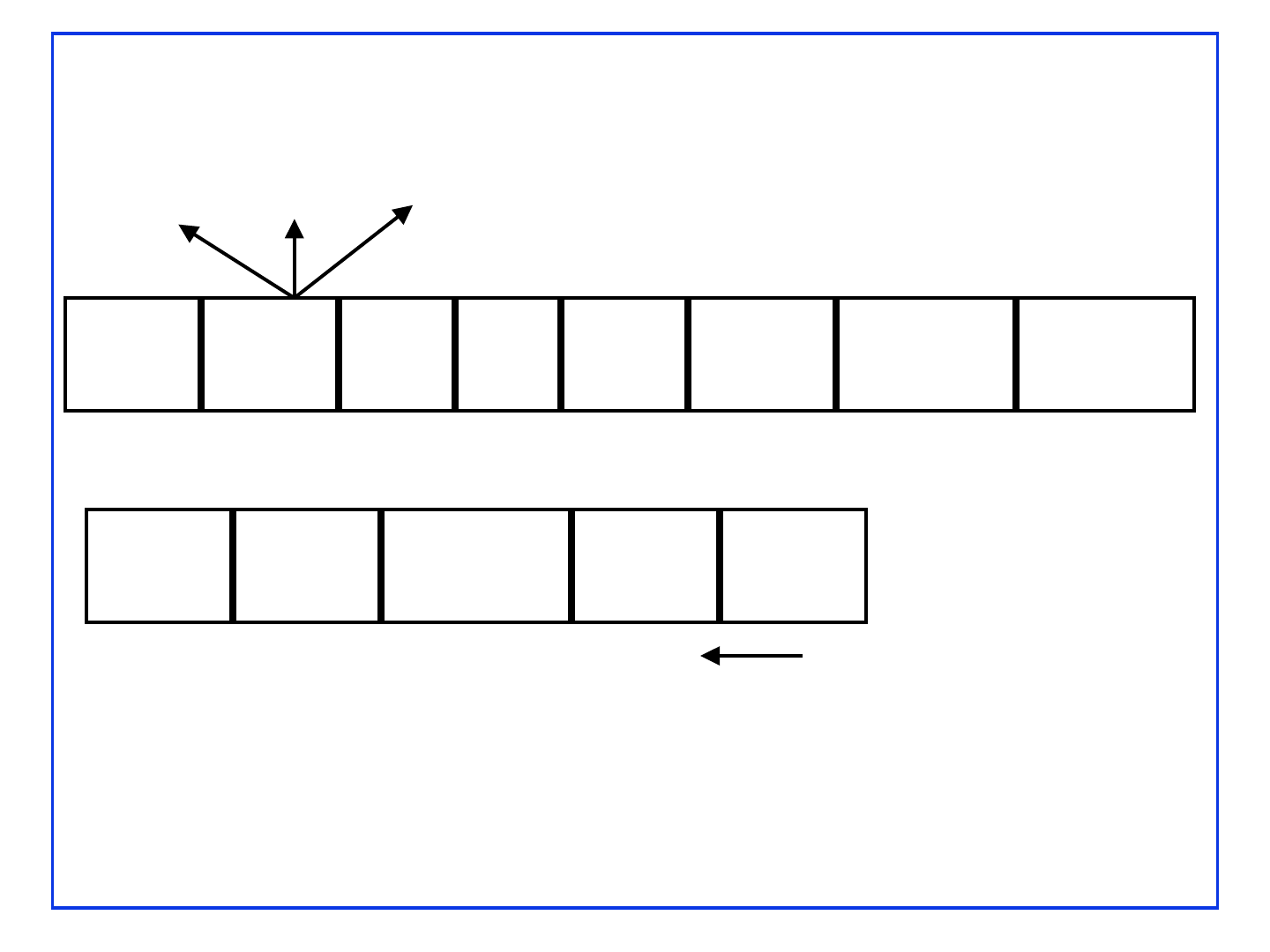
48
©2008 Raj JainWashington University in St. Louis
TCP Header Format
TCP Header Format
16 16 32 32 6
Source
Port
Dest
Port
Seq
No
Ack
No
Data
Offset
Control WindowResvd
4616
16 16 x y
Size in bits
Check-
sum
Urgent Options Pad Data
FTP HTTP SMTP

49
©2008 Raj JainWashington University in St. Louis
TCP Header
TCP Header
! Source Port (16 bits): Identifies source user process
20 = FTP, 23 = Telnet, 53 = DNS, 80 = HTTP, ...
! Destination Port (16 bits)
! Sequence Number (32 bits): Sequence number of the
first byte in the segment.
! Ack number (32 bits): Next byte expected
! Data offset (4 bits): # of 32-bit words in the header
! Reserved (6 bits)
! Window (16 bits): Will accept [Ack] to
[Ack]+[window]

50
©2008 Raj JainWashington University in St. Louis
User Datagram Protocol (UDP)
User Datagram Protocol (UDP)
! Connectionless end-to-end service
! Unreliable: No flow control.
No error recovery (No acks. No retransmissions.)
! Used by network management and Audio/Video.
! Provides port addressing
! Error detection (Checksum) optional.
Source
Port
Dest
Port
Check-
sum
Length
16 16 16
Size in bits16
Data

51
©2008 Raj JainWashington University in St. Louis
Summary
Summary
! IP is the forwarding protocol between networks
! IPv4 uses 32-bit addresses
! IPv6 uses 128 bit addresses
! DNS: Maps names to addresses
! TCP provides reliable full-duplex connections.
! UDP is connectionless and simple. No flow/error
control.

52
©2008 Raj JainWashington University in St. Louis
Raj Jain
Professor of Computer Science and Engineering
Washington University in Saint Louis
Saint Louis, MO, USA
http://www.cse.wustl.edu/~jain/

53
©2008 Raj JainWashington University in St. Louis
! CSMA/CD
! IEEE 802 Address Format
! Interconnection Devices
! Distance-B/W Principle
! Gigabit Ethernet
! Spanning Tree
! 10Gbps Ethernet PHYs
! Metro Ethernet Services
Overview
Overview

55
©2008 Raj JainWashington University in St. Louis
CSMA/CD
CSMA/CD
! Aloha at Univ of Hawaii:
Transmit whenever you like
Worst case utilization = 1/(2e) =18%
! Slotted Aloha: Fixed size transmission slots
Worst case utilization = 1/e = 37%
! CSMA: Carrier Sense Multiple Access
Listen before you transmit
! p-Persistent CSMA: If idle, transmit with probability
p. Delay by one time unit with probability 1-p
! CSMA/CD: CSMA with Collision Detection
Listen while transmitting. Stop if you hear someone
else

56
©2008 Raj JainWashington University in St. Louis
IEEE 802.3 CSMA/CD
IEEE 802.3 CSMA/CD
! If the medium is idle, transmit (1-persistent).
! If the medium is busy, wait until idle and then
transmit immediately.
! If a collision is detected while transmitting,
" Transmit a jam signal for one slot
(= 51.2 s = 64 byte times)
" Wait for a random time and reattempt (up to 16
times)
" Random time = Uniform[0,2
min(k,10)
-1] slots
! Collision detected by monitoring the voltage
High voltage two or more transmitters Collision
Length of the cable is limited to 2 km

57
©2008 Raj JainWashington University in St. Louis
Ethernet Standards
Ethernet Standards
! 10BASE5: 10 Mb/s over coaxial cable (ThickWire)
! 10BROAD36: 10 Mb/s over broadband cable, 3600 m
max segments
! 1BASE5: 1 Mb/s over 2 pairs of UTP
! 10BASE2: 10 Mb/s over thin RG58 coaxial cable
(ThinWire), 185 m max segments
! 10BASE-T: 10 Mb/s over 2 pairs of UTP
! 10BASE-FL: 10 Mb/s fiber optic point-to-point link
! 10BASE-FB: 10 Mb/s fiber optic backbone (between
repeaters). Also, known as synchronous Ethernet.

58
©2008 Raj JainWashington University in St. Louis
Ethernet Standards (Cont)
Ethernet Standards (Cont)
! 10BASE-FP: 10 Mb/s fiber optic passive star +
segments
! 10BASE-F: 10BASE-FL, 10BASE-FB, or 10BASE-
FP
! 100BASE-T4: 100 Mb/s over 4 pairs of CAT-3, 4, 5
UTP
! 100BASE-TX: 100 Mb/s over 2 pairs of CAT-5 UTP
or STP
! 100BASE-FX: 100 Mbps CSMA/CD over 2 optical
fiber

59
©2008 Raj JainWashington University in St. Louis
100BASE-T
100BASE-T
100BASE-T4
100BASE-T4
100BASE-X
100BASE-X
100BASE-TX
100BASE-TX
100BASE-FX
100BASE-FX
Ethernet Standards (Cont)
Ethernet Standards (Cont)
! 100BASE-X: 100BASE-TX or 100BASE-FX
! 100BASE-T: 100BASE-T4, 100BASE-TX, or
100BASE-FX
! 1000BASE-T: 1 Gbps (Gigabit Ethernet)

60
©2008 Raj JainWashington University in St. Louis
IEEE 802 Address Format
IEEE 802 Address Format
! Multicast = “To all bridges on this LAN”
! Broadcast = “To all stations”
= 111111....111 = FF:FF:FF:FF:FF:FF
! 48-bit:1000 0000 : 0000 0001 : 0100 0011
: 0000 0000 : 1000 0000 : 0000 1100
= 80:01:43:00:80:0C
Individual/
Group
Universal/
Local
24 bits assigned by
OUI Owner
11 22
24
Organizationally Unique
Identifier (OUI)

61
©2008 Raj JainWashington University in St. Louis
Ethernet
Ethernet
vs
vs
IEEE 802.3
IEEE 802.3
! In 802.3, datalink was divided into two sublayers:
LLC and MAC
! LLC provides protocol multiplexing. MAC does not.
! MAC does not need a protocol type field.
IP
Ethernet
IPX IP
Media Access Control (MAC)
IPX
Logical Link Control (LLC)

62
©2008 Raj JainWashington University in St. Louis
Frame Format
Frame Format
! Ethernet
! IEEE 802.3
Dest.
Address
Source
Address
Type
66 2
Size in
bytes
Dest.
Address
Source
Address
Length
Info
66 2
IP IPX AppleTalk
LLC
IP IPX AppleTalk
CRC
CRC
4
4
Pad
Length
Info

63
©2008 Raj JainWashington University in St. Louis
LLC Type 1
LLC Type 1
! Unacknowledged connectionless (on 802.3)
No flow or error control.
Provides protocol multiplexing.
Uses 3 types of protocol data units (PDUs):
UI = Unnumbered informaton
XID = Exchange ID
= Types of operation supported, window
Test = Loop back test

64
©2008 Raj JainWashington University in St. Louis
Interconnection Devices
Interconnection Devices
! Repeater: PHY device that restores data and
collision signals
! Hub: Multiport repeater + fault detection and
recovery
! Bridge: Datalink layer device connecting two or
more collision domains. MAC multicasts are
propagated throughout “extended LAN.”
! Router: Network layer device. IP, IPX, AppleTalk.
Does not propagate MAC multicasts.
! Switch: Multiport bridge with parallel paths
These are functions. Packaging varies.

65
©2008 Raj JainWashington University in St. Louis
Interconnection Devices
Interconnection Devices
H H
B
H H
Router
Extended LAN
=Broadcast
domain
LAN=
Collision
Domain
Network
Datalink
Physical
Transport
Router
Bridge/Switch
Repeater/Hub
Gateway
Application
Network
Datalink
Physical
Transport
Application

67
©2008 Raj JainWashington University in St. Louis
Distance
Distance
-
-
B/W Principle
B/W Principle
! Efficiency = Max throughput/Media bandwidth
! Efficiency is a nonincreasing function of α
α = Propagation delay /Transmission time
= (Distance/Speed of light)/(Transmission size/Bits/sec)
= Distance×Bits/sec/(Speed of light)(Transmission size)
! Bit rate-distance-transmission size tradeoff.
! 100 Mb/s ⇒ Change distance or frame size

68
©2008 Raj JainWashington University in St. Louis
CSMA/CDCSMA/CD
2.5 km
Bus, star
Ethernet vs Fast Ethernet
Ethernet vs Fast Ethernet
Ethernet Fast Ethernet
Speed 10 Mbps 100 Mbps
MAC
Network diameter 205 m
Topology Star
Cable Coax, UTP, Fiber UTP, Fiber
Standard 802.3 802.3u
Cost X 2X
R
R
R
R

69
©2008 Raj JainWashington University in St. Louis
Full
Full
-
-
Duplex Ethernet
Duplex Ethernet
! Uses point-to-point links between TWO nodes
! Full-duplex bi-directional transmission
! Transmit any time
! Many vendors are shipping switch/bridge/NICs with
full duplex
! No collisions ⇒ 50+ Km on fiber.
! Between servers and switches or between switches

70
©2008 Raj JainWashington University in St. Louis
1000Base
1000Base
-
-
X
X
! 1000Base-LX: 1300-nm laser transceivers
" 2 to 550 m on 62.5-μm or 50-μm
multimode, 2 to 3000 m on 10-μm single-mode
! 1000Base-SX: 850-nm laser transceivers
" 2 to 300 m on 62.5-μm, 2 to 550 m on 50-μm.
Both multimode.
! 1000Base-CX: Short-haul copper jumpers
" 25 m 2-pair shielded twinax cable in a single
room or rack.
Uses 8b/10b coding ⇒ 1.25 Gbps line rate

71
©2008 Raj JainWashington University in St. Louis
1000Base
1000Base
-
-
T
T
! 100 m on 4-pair Cat-5 UTP
⇒ Network diameter of 200 m
! 250 Mbps/pair full duplex DSP based PHY
⇒ Requires new 5-level (PAM-5) signaling
with 4-D 8-state Trellis code FEC
! Automatically detects and corrects pair-swapping,
incorrect polarity, differential delay variations across
pairs
! Autonegotiation ⇒ Compatibility with 100Base-T
! 802.3ab task force began March’97, ballot July’98,
Final standard by March’99.

72
©2008 Raj JainWashington University in St. Louis
2. Spanning Tree
2. Spanning Tree
LAN A
LAN B LAN C
LAN D LAN E LAN GLAN F
B
101
B
102
B
103
B
104
B
105
B
106
S
S
SSS
SS
Fig 14.5

73
©2008 Raj JainWashington University in St. Louis
Spanning Tree (Cont)
Spanning Tree (Cont)
LAN A
LAN B LAN C
LAN D LAN E LAN GLAN F
Br
101
B
102
Br
103
B
104
B
105
B
106
St
StStSS
SS
B
107
Fig 14.6

74
©2008 Raj JainWashington University in St. Louis
Spanning Tree Algorithm
Spanning Tree Algorithm
! All bridges multicast to “All bridges”
" My ID
" Root ID
" My cost to root
! The bridges update their info using Dijkstra’s
algorithm and rebroadcast
! Initially all bridges are roots but eventually converge
to one root as they find out the lowest Bridge ID.
! On each LAN, the bridge with minimum cost to the
root becomes the Designated bridge
! All ports of all non-designated bridges are blocked.
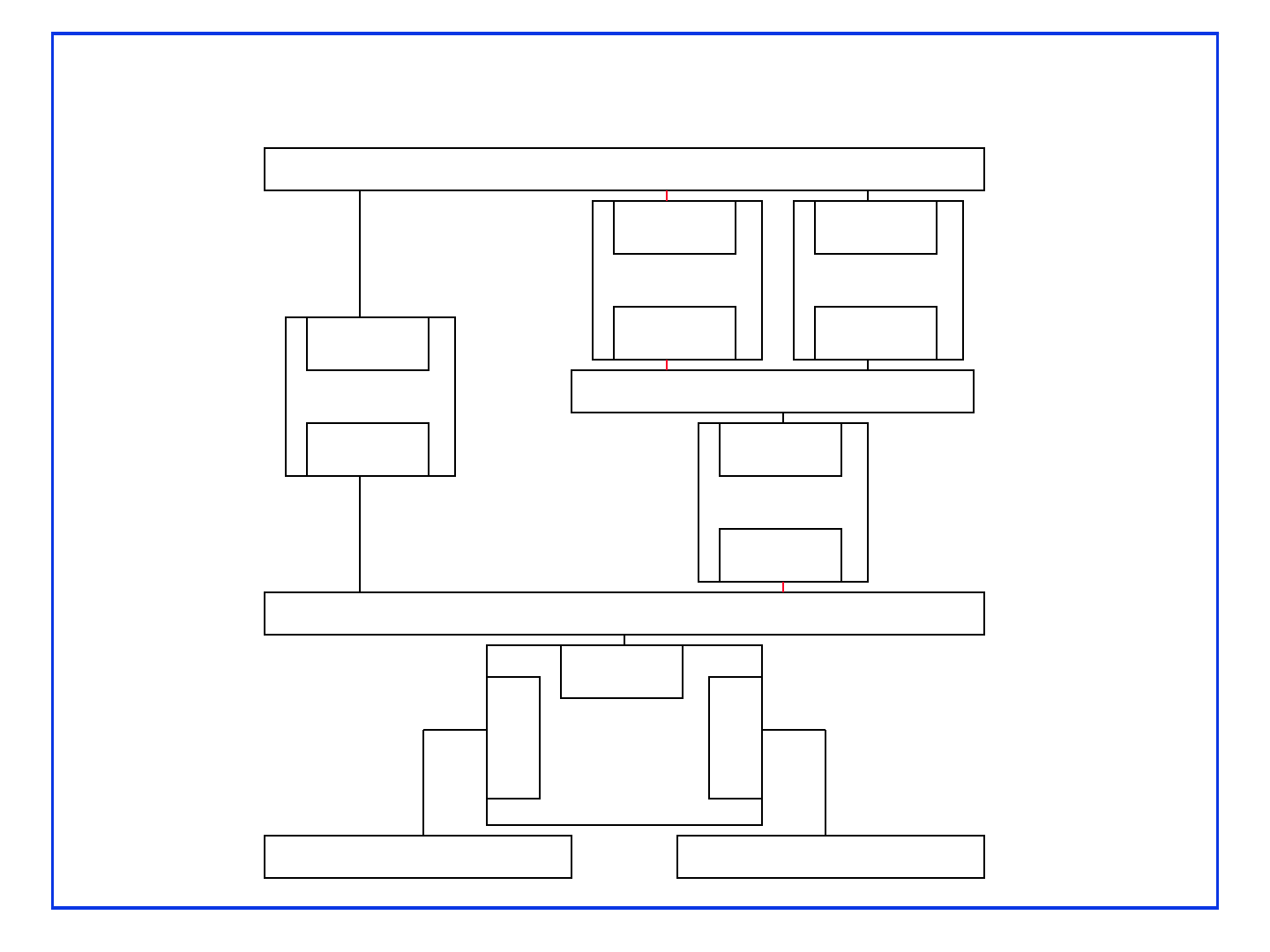
75
©2008 Raj JainWashington University in St. Louis
Spanning Tree Example
Spanning Tree Example
LAN2
LAN5
LAN1
LAN3 LAN4
Bridge 4
C=5
C=5
Bridge 5
C=5
C=5
Bridge 2
C=10
C=5
Bridge 3
C=10
C=10
Bridge 1
C=10
C=10
C=5

77
©2008 Raj JainWashington University in St. Louis
Ethernet: 1G vs 10G Designs
Ethernet: 1G vs 10G Designs
1G Ethernet
! 1000 / 800 / 622 Mbps
Single data rate
! LAN distances only
! No Full-duplex only
⇒ Shared Mode
! Changes to CSMA/CD
10G Ethernet
! 10.0/9.5 Gbps
Both rates.
! LAN and MAN distances
! Full-duplex only
⇒ No Shared Mode
! No CSMA/CD protocol
⇒ No distance limit due to MAC
⇒ Ethernet End-to-End

78
©2008 Raj JainWashington University in St. Louis
Gigabit Ethernet
Gigabit Ethernet
PHYs
PHYs
! S = Short Wave, L=Long Wave, E=Extra Long Wave
! R = Regular reach (64b/66b), W=WAN (64b/66b + SONET Encapsulation),
X = 8b/10b
! 4 = 4 λ’s

79
©2008 Raj JainWashington University in St. Louis
10Gbps Ethernet
10Gbps Ethernet
PHYs
PHYs

80
©2008 Raj JainWashington University in St. Louis
10GBASE
10GBASE
-
-
T
T
! New PHY for data center and horizontal wiring
! Compatible with existing 802.3ae MAC, XGMII, XAUI
! Standard: Start: Nov 2003 Finish: Jul 2006
! 100 m on Cat-7 and 55+ m on Cat-6
! Cost 0.6 of optical PHY. Greater reach than CX4
! 10-level coded PAM signaling with 3 bits/symbol
833 MBaud/pair => 450 MHz bandwidth w FEXT cancellation
(1GBASE-T uses 5-level PAM with 2 bits/symbol, 125
MBaud/pair, 80 MHz w/o FEXT)
! Full-duplex only. 1000BASE-T line code and FEC designed
for half-duplex.
! http://www.ieee802.org/3/10GBT

81
©2008 Raj JainWashington University in St. Louis
10 GbE over Dark Fiber
10 GbE over Dark Fiber
! Need only LAN PMD up to 40 km.
No SONET overhead. No protection.
Metro
Optical
Network
10GbE
10GbE
10GbE

82
©2008 Raj JainWashington University in St. Louis
10 GbE over SONET/SDH
10 GbE over SONET/SDH
! Using WAN PMD.
Legacy SONET. Protection via rings.
ELTE = Ethernet Line Terminating Equipment
Metro
SONET
Net
SONET ADM
10GbE
10GbE
10GbE

83
©2008 Raj JainWashington University in St. Louis
Metro Ethernet Services
Metro Ethernet Services
! Transparent LAN service
10GbE
10GbE
10GbE
Carrier
Network
10GbE

84
©2008 Raj JainWashington University in St. Louis
Virtual Private LAN Services (VPLS)
Virtual Private LAN Services (VPLS)
! Ethernet Internet Access
! Ethernet Virtual Private Line
! Ethernet Virtual Private LAN
ISP

85
©2008 Raj JainWashington University in St. Louis
Metro Ethernet Services
Metro Ethernet Services
! User-to-network Interface (UNI) = RJ45
! Ethernet Virtual Connection (EVC) = Flows
! Ethernet Line Service (ELS) = Point-to-point
! Ethernet LAN Service (E-LAN) = multipoint-to-multipoint
CE
PE
PE
PE
PE
CE
CE
PE
PE
PE
PE
CE
CE
PE
PE
PE
PE
CE

86
©2008 Raj JainWashington University in St. Louis
Enterprise vs Carrier Ethernet
Enterprise vs Carrier Ethernet
Enterprise
! Distance: up to 2km
! Scale:
" Few K MAC addresses
" 4096 VLANs
! Protection: Spanning tree
! Path determined by
spanning tree
! Simple service
! Priority ⇒ Aggregate QoS
! No performance/Error
monitoring (OAM)
Carrier
! Up to 100 km
! Millions of MAC Addresses
! Millions of VLANs
Q-in-Q
! Rapid spanning tree
(Gives 1s, need 50ms)
! Traffic engineered path
! SLA
! Need per-flow QoS
! Need performance/BER
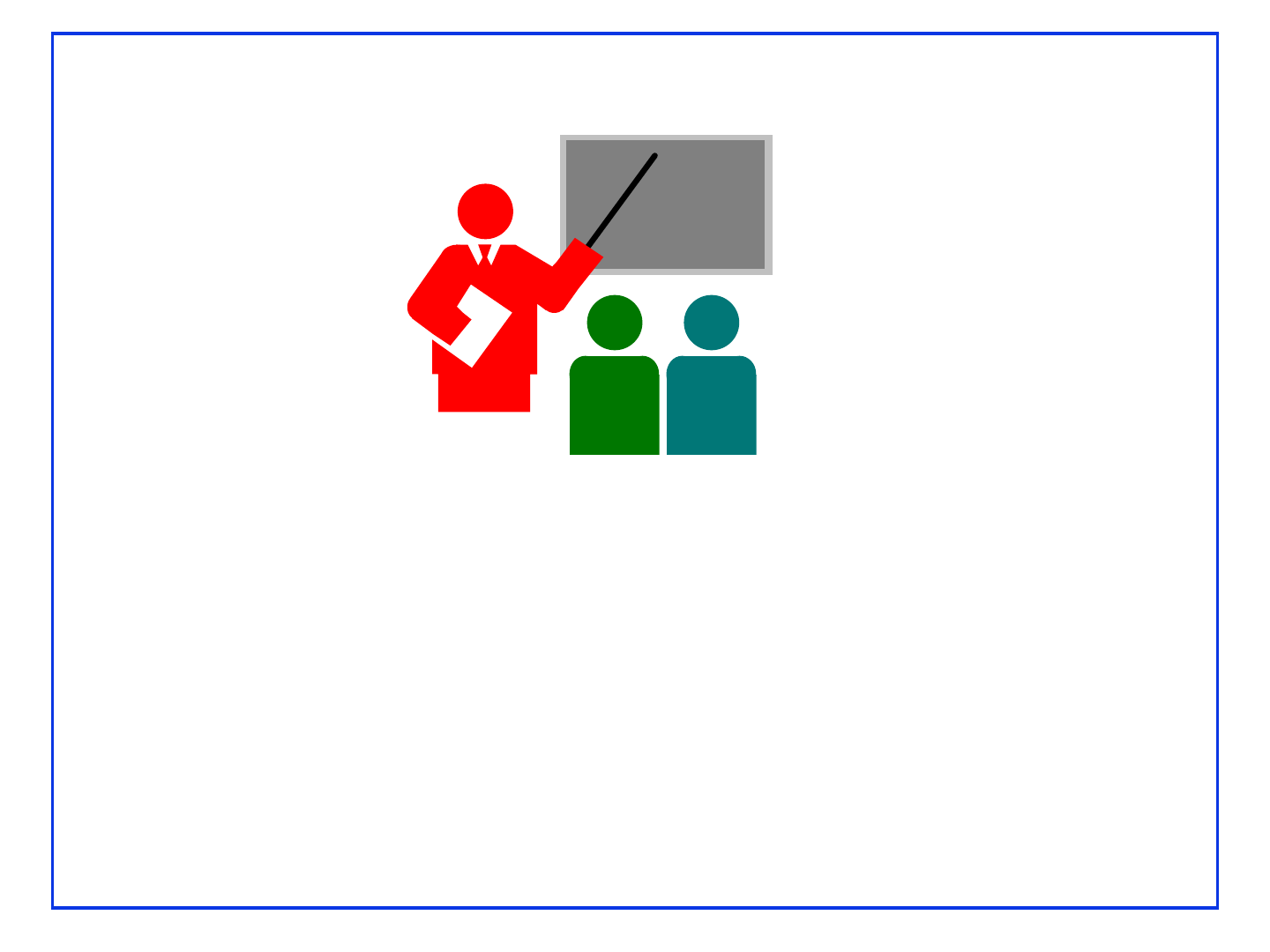
87
©2008 Raj JainWashington University in St. Louis
Summary
Summary
! Ethernet/IEEE 802.3 initially used CSMA/CD.
! Distance bandwidth principle
⇒ Bit rate-distance-transmission size tradeoff
! Ethernet Standards:
10Base5, 10Base2, 10Base-T, 100Base-TX, etc.
! Addresses: Local vs Global, Unicast vs Broadcast
! Spanning Tree
! Metro Ethernet Services

88
©2008 Raj JainWashington University in St. Louis
GbE, 10 GbE, RPR: Key References
GbE, 10 GbE, RPR: Key References
! For a detailed list of references, see
http://www.cse.wustl.edu/~jain/refs/gbe_refs.htm
Also reproduced at the end of this tutorial book.
! Gigabit Ethernet Overview,
http://www.cse.wustl.edu/~jain/cis788-
97/gigabit_ethernet/index.htm
! 10 Gigabit Ethernet, http://www.cse.wustl.edu/~jain/cis788-
99/10gbe/index.html
! 10 Gigabit Ethernet Alliance, http://www.10gea.org
! 10 GbE Resource Site, http://www.10gigabit-ethernet.com
! RPR Alliance, http://www.rpralliance.org/

89
©2008 Raj JainWashington University in St. Louis
References (Cont)
References (Cont)
! IEEE 802.3 Higher Speed Study Group,
http://grouper.ieee.org/groups/802/3/10G_study/publi
c/index.html
! Email Reflector, http://grouper.ieee.org/groups/802/3/
10G_study/email/thrd1.html
! IEEE 802.3ae 10Gb/s Ethernet Task Force,
http://grouper.ieee.org/groups/802/3/ae/index.html
! IEEE 802.3ae email list, send a message with
"subscribe stds-802-3-hssg <email adr>" in body to

90
©2008 Raj JainWashington University in St. Louis
Quality of Service in IP
Quality of Service in IP
Networks
Networks
Raj Jain
Professor of Computer Science and Engineering
Washington University in Saint Louis
Saint Louis, MO, USA
http://www.cse.wustl.edu/~jain/

91
©2008 Raj JainWashington University in St. Louis
Overview
Overview
! ATM QoS and Issues
! Integrated Services and RSVP
! Differentiated Services:
Expedited and Assured Forwarding
! Subnet Bandwidth Manager (SBM)
! COPS Protocol for Policy
! IEEE 802.1D Model

93
©2008 Raj JainWashington University in St. Louis
ATM Classes of Service
ATM Classes of Service
! ABR (Available bit rate): Source follows feedback.
Max throughput with minimum loss.
! UBR (Unspecified bit rate):
User sends whenever it wants. No feedback. No
guarantee. Cells may be dropped during congestion.
! CBR (Constant bit rate): User declares required rate.
Throughput, delay and delay variation guaranteed.
! VBR (Variable bit rate): Declare avg and max rate.
" rt-VBR (Real-time): Conferencing.
Max delay guaranteed.
" nrt-VBR (non-real time): Stored video.
! GFR (Guaranteed Frame Rate): Min Frame Rate

95
©2008 Raj JainWashington University in St. Louis
Integrated Services
Integrated Services
! Best Effort Service: Like UBR.
! Controlled-Load Service: Performance as good as in
an unloaded datagram network. No quantitative
assurances. Like nrt-VBR or UBR w MCR
! Guaranteed Service: rt-VBR
" Firm bound on data throughput and delay.
" Delay jitter or average delay not guaranteed or
minimized.
" Every element along the path must provide delay
bound.
" Is not always implementable, e.g., Shared Ethernet.
" Like CBR or rt-VBR

96
©2008 Raj JainWashington University in St. Louis
RSVP
RSVP
! Resource ReSerVation Protocol
! Internet signaling protocol
! Carries resource reservation requests through the
network including traffic specs, QoS specs, network
resource availability
! Sets up reservations at each hop
Traffic Spec
QoS Spec
Traffic Spec
Network
ReceiverSender
Available Resources
AdSpec

97
©2008 Raj JainWashington University in St. Louis
RSVP Messages
RSVP Messages
Source
Host
Dest
Host
! Path: Sender’s traffic spec
Path state is created. Regularly refereshed.
! Resv: Resv state is created. Regularly
refereshed
! ResvConf: Sent upon request to confirm Resv
! PathErr, ResvErr: Error in path or reservation
Installation
! MsgIdAck/Nack: Trigger reporting of an
event
! Srefresh: To refresh a group of path/resv states
! PathTear/ResvTear: Remove Path/Resv States
Path
Resv
ResvConf
PathErr
ResvErr
MsgIDAck
MsgIDNack
Srefresh
PathTear
ResvTear

100
©2008 Raj JainWashington University in St. Louis
Problems with RSVP and Integrated
Problems with RSVP and Integrated
Services
Services
! Complexity in routers: multi-field packet
classification, scheduling
! Per-flow signaling, packet handling, state.
O(n) ⇒ Not scalable with # of flows.
Number of flows in the backbone may be large.
⇒ Suitable for small private networks
! Need a concept of “Virtual Paths” or aggregated flow
groups for the backbone
! Need policy controls: Who can make reservations?
Support for accounting and security.
⇒ RSVP admission policy (rap) working group.

101
©2008 Raj JainWashington University in St. Louis
Problems (Cont)
Problems (Cont)
! Receiver Based:
Need sender control/notifications in some cases.
Which receiver pays for shared part of the tree?
! Soft State: Need route/path pinning (stability).
Limit number of changes during a session.
! RSVP does not have negotiation and backtracking
! Throughput and delay guarantees require support of
lower layers. Shared Ethernet ⇒ IP can’t do GS or
CLS. Need switched full-duplex LANs.
! RSVP is being revived to for MPLS and DiffServ
signaling. Also, policy, aggregation, security concepts
are being developed

102
©2008 Raj JainWashington University in St. Louis
Differentiated Services
Differentiated Services
! IPv4: 3-bit precedence + 4-bit ToS
! OSPF and integrated IS-IS can compute paths for each
ToS
! Many vendors use IP precedence bits but the service
varies ⇒ Need a standard ⇒ Differentiated Services
! DS working group formed February 1998
! Charter: Define ds byte (IPv4 ToS field)
! Mail Archive: http://www-nrg.ee.lbl.gov/diff-serv-arch/
Precedence ToSHdr LenVer Unused Tot Len
4b 4b 3b 4b 1b 16b

104
©2008 Raj JainWashington University in St. Louis
DiffServ Concepts
DiffServ Concepts
! Micro-flow = A single application-to-application flow
! Traffic Conditioners: Meters (token bucket), Markers
(tag), Shapers (delay), Droppers (drop)
! Behavior Aggregate (BA) Classifier:
Based on DS byte only
! Multi-field (MF) Classifiers:
Based on IP addresses, ports, DS-byte, etc..
Meter
Classifier Marker Shaper/DropperPackets

105
©2008 Raj JainWashington University in St. Louis
Diff
Diff
-
-
Serv Concepts (Cont)
Serv Concepts (Cont)
! Service: Offered by the protocol layer
" Application: Mail, FTP, WWW, Video,...
" Transport: Delivery, Express Delivery,...
Best effort, controlled load, guaranteed service
" DS group will not develop services
They will standardize “Per-Hop Behaviors”

106
©2008 Raj JainWashington University in St. Louis
Per
Per
-
-
hop Behaviors
hop Behaviors
! Externally Observable Forwarding Behavior
! x% of link bandwidth
! Minimum x% and fair share of excess bandwidth
! Priority relative to other PHBs
! PHB Groups: Related PHBs. PHBs in the group share
common constraints, e.g., loss priority, relative delay
PHB
OutIn

107
©2008 Raj JainWashington University in St. Louis
Expedited Forwarding
Expedited Forwarding
! Also known as “Premium Service”
! Virtual leased line
! Similar to CBR
! Guaranteed minimum service rate
! Policed: Arrival rate < Minimum Service Rate
! Not affected by other data PHBs
⇒ Highest data priority (if priority queueing)
! Code point: 101 110

108
©2008 Raj JainWashington University in St. Louis
Assured Forwarding
Assured Forwarding
! PHB Group
! Four Classes: No particular ordering.
⇒ Creates 4 distinct networks with specified QoS. Share
unused capacity.
! Three drop preference per class
Scheduling Policy
Drop Policy

109
©2008 Raj JainWashington University in St. Louis
Assured Forwarding (Cont)
Assured Forwarding (Cont)
! DS nodes SHOULD implement all 4 classes
and MUST accept all 3 drop preferences. Can implement 2
drop preferences.
! Similar to nrt-VBR/ABR/GFR
! Code Points:
! Avoids xxx000 class selectors. Last bit 0 ⇒ Standard
Drop Prec. Class 1 Class 2 Class 3 Class 4
Low 001 010 010 010 011 010 100 010
Medium 001 100 010 100 011 100 100 100
High 001 110 010 110 011 110 100 110

110
©2008 Raj JainWashington University in St. Louis
Per
Per
-
-
Domain Behavior
Domain Behavior
! PDBs: Measurable edge to edge behavior across a cloud
with same DS policies for all packets of a given PHB
! Existing PHBs have been extended to PDBs:
" Virtual wire PDB: Based on EF
" Assured Rate PDB: Based on AF.
Min Rate. No delay or jitter guarantee
" Bulk Handling PDB: Less than “Best Effort.”
Dropped if no resources. No need to police.
DiffServ Domain

111
©2008 Raj JainWashington University in St. Louis
Problems with DiffServ
Problems with DiffServ
! per-hop ⇒ Need at every hop
One non-DiffServ hop can spoil all QoS
! End-to-end ≠Σper-Hop
Designing end-to-end services with weighted
guarantees at individual hops is difficult.
! How to ensure resource availability inside the
network?
Sonet
Network
SONET
ADM
SONET
ADM
SONET
ADM
Router Router

112
©2008 Raj JainWashington University in St. Louis
DiffServ Problems (Cont)
DiffServ Problems (Cont)
! QoS is for the aggregate not micro-flows.
" Large number of short flows are better handled by
aggregates.
" High-bandwidth flows (1 Mbps video) need per-
flow guarantees.
! Designed for static Service Level Agreements (SLAs)
Both the network topology and traffic are highly
dynamic.
! Need route pinning or connections.
! Not all DSCPs used by all vendors/providers.
DSCPs rewritten at domain boundaries.

113
©2008 Raj JainWashington University in St. Louis
QoS Debate Issues
QoS Debate Issues
! Massive Bandwidth vs Managed Bandwidth
! Per-Flow vs Aggregate
! Source-Controlled vs Receiver Controlled
! Soft State vs Hard State
! Path based vs Access based
! Quantitative vs Qualitative
! Absolute vs Relative
! End-to-end vs Per-hop
! Static vs Feedback-based
! One-way multicast vs n-way multicast
! Homogeneous multicast vs heterogeneous multicast
! Single vs multiple bottlenecks: Scheduling

114
©2008 Raj JainWashington University in St. Louis
Comparison of QoS Approaches
Comparison of QoS Approaches
Issue ATM IntServ DiffServ MPLS IEEE
802.3D
Massive Bandwidth
vs Managed
Bandwidth
Managed Managed Massive Managed Massive
Per-Flow vs
Aggregate
Both Per-flow Aggregate Both Aggregate
Source-Controlled
vs Receiver
Controlled
Unicast
Source,
Multicast
both
Receiver Ingress Both Source
Soft State vs Hard
State
Hard Soft None Hard Hard
Path based vs
Access based
Path Path Access Path Access
Quantitative vs
Qualitative
Quantitativ
e
Quantitativ
e+Qualitati
ve
Mostly
qualitative
Both Qualitative
Absolute vs Relative Absolute Absolute Mostly
Relative
Absolute
plus
relative
Relative

115
©2008 Raj JainWashington University in St. Louis
Comparison (Cont)
Comparison (Cont)
Issue ATM IntServ DiffServ MPLS IEEE
802.3D
End-to-end vs Per-
hop
e-e e-e Per-hop e-e Per-hop
Static vs Feedback-
based
Both Static Static Static Static
One-way multicast
vs n-way multicast
Only one-
way
Homogeneous
multicast vs
heterogeneous
multicast
Homogene
ous
Heterogen
eous
N/A Homogene
ous
N/A
Single vs multiple
bottlenecks:
Scheduling
Multiple
bottleneck
Multiple Multiple
Issue ATM IntServ DiffServ MPLS IEEE
802.3D
End-to-end vs Per-
hop
e-e e-e Per-hop e-e Per-hop
Static vs Feedback-
based
Both Static Static Static Static
One-way multicast
vs n-way multicast
Only one-
way
Homogeneous
multicast vs
heterogeneous
multicast
Homogene
ous
Heterogen
eous
N/A Homogene
ous
N/A
Single vs multiple
bottlenecks:
Scheduling
Multiple
bottleneck
Multiple Multiple

116
©2008 Raj JainWashington University in St. Louis
Summary
Summary
1. ATM: CBR, VBR, ABR, UBR, GFR
2. Integrated Services: GS = rtVBR, CLS = nrt-VBR
3. Signaling protocol: RSVP
4. Differentiated Services will use the DS byte
5. 802.1D allows priority

117
©2008 Raj JainWashington University in St. Louis
Multi
Multi
-
-
Protocol Label
Protocol Label
Switching (MPLS)
Switching (MPLS)
Raj Jain
Professor of Computer Science and Engineering
Washington University in Saint Louis
Saint Louis, MO, USA
http://www.cse.wustl.edu/~jain/

118
©2008 Raj JainWashington University in St. Louis
Overview
Overview
! Routing vs Switching
! Label Stacks
! Label Distribution Protocol (LDP)
! RSVP Extensions
! Traffic Engineering
! Traffic Trunks
! Traffic Engineering Extensions to OSPF and IS-IS

119
©2008 Raj JainWashington University in St. Louis
Multiprotocol Label Switching (MPLS)
Multiprotocol Label Switching (MPLS)
! Allows virtual circuits in IP Networks (May 1996)
! Each packet has a virtual circuit number called ‘label’
! Label determines the packet’s queuing and forwarding
! Circuits are called Label Switched Paths (LSPs)
! LSP’s have to be set up before use
! Allows traffic engineering
PBX
PBX
PBX
PBX
1 3 5 2 3

120
©2008 Raj JainWashington University in St. Louis
Routing vs Switching
Routing vs Switching
! Routing: Based on address lookup. Max prefix match.
⇒ Search Operation
⇒ Complexity ≈ O(log
2
n)
! Switching: Based on circuit numbers
⇒ Indexing operation
⇒ Complexity O(1)
⇒ Fast and Scalable for large networks and
large address spaces
! These distinctions apply on all datalinks: ATM,
Ethernet, SONET
164.107.61.201 3

121
©2008 Raj JainWashington University in St. Louis
MPLS Terminology
MPLS Terminology
! Label Edge Router (LER)
! Label Switching Router (LSR)
! Label Switched Path (LSP)
! Forwarding Equivalence Class (FEC)
LER
LSR
LSR
LER
LSR

122
©2008 Raj JainWashington University in St. Louis
Label Switching Example
Label Switching Example
! One VC per routing table entry
R
164.107/16
<3>
R
164.107/16
<2>
164.107/16
<64>
164.107/16
<5>
R
164.107/16
<3>
64
3
2
5
3

123
©2008 Raj JainWashington University in St. Louis
Label Stack Entry Format
Label Stack Entry Format
! Labels = Explicit or implicit L2 header
! TTL = Time to live
! Exp = Experimental
! SI = Stack indicator
L2 Header Label Stack Entry
Label Exp SI TTL
20b 3b 1b 8b
Label Stack Entry
...

124
©2008 Raj JainWashington University in St. Louis
Label Stacks
Label Stacks
! Labels are pushed/popped
as they enter/leave MPLS domain
! Routers in the interior will use Interior Gateway Protocol (IGP)
labels. Border gateway protocol (BGP) labels outside.
! Bottom label may indicate protocol (0=IPv4, 2=IPv6)
L2 Header LSE 1 LSE 2 LSE n
...
Label
A
B
A B
C C
A
B

125
©2008 Raj JainWashington University in St. Louis
Label Assignment
Label Assignment
! Unsolicited: Topology driven ⇒ Routing protocols
exchange labels with routing information.
Many existing routing protocols are being extended:
BGP, OSPF
! On-Demand:
⇒ Label assigned when requested,
e.g., when a packet arrives ⇒ latency
! Label Distribution Protocol called LDP
! RSVP has been extended to allow label request and
response
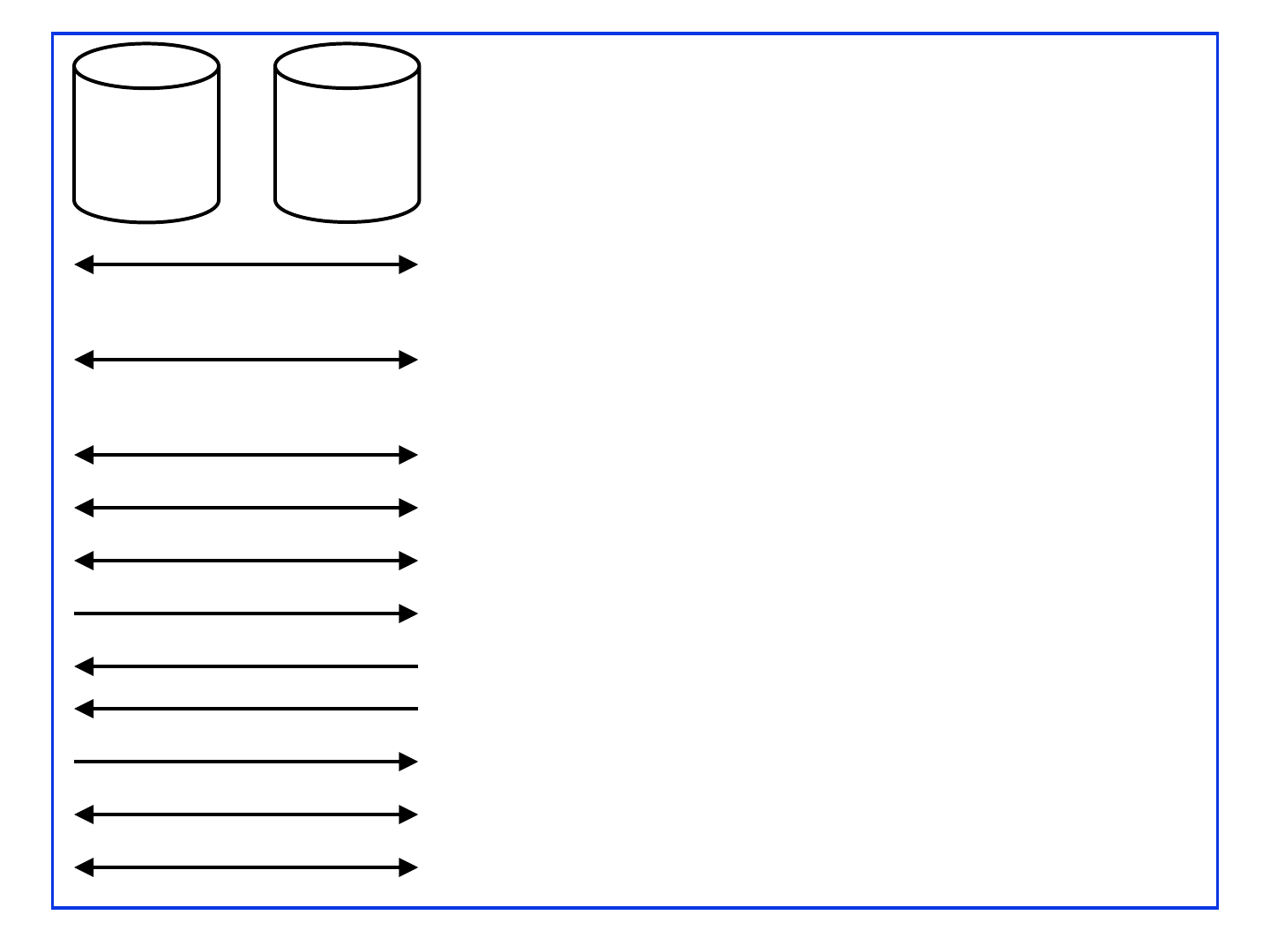
126
©2008 Raj JainWashington University in St. Louis
LDP Messages
LDP Messages
! Hello: Sent periodically to “all routers on
this subnet”
! Initialization: parameters and capability
exchange
! KeepAlive: Keep the LDP session alive
! Address (advertise interface addresses)
! Address Withdraw
! Label Request
! Label Mapping (Label Response)
! Label Withdraw (by downstream)
! Label Release (by upstream)
! Label Abort Request
! Notification: Error/advisory information
Upstream
Router
Down-
stream
Router
Address Withdraw
Label Mapping
Hello
Initialization
KeepAlive
Address
Label Request
Label Release
Label Abort
Notification
Label Withdraw

127
©2008 Raj JainWashington University in St. Louis
CR
CR
-
-
LDP
LDP
! Extension of LDP for constraint-based routing (CR)
! New Features:
" Traffic parameters
" Explicit Routing with Egress Label
" Preemption of existing route. Based on holding
priorities and setup priorities
" Route pinning: To prevent path changes
" Label Set: Allows label constraints (wavelengths)
! No new messages
! Enhanced Messages: Label request, Label Mapping,
Notification

128
©2008 Raj JainWashington University in St. Louis
RSVP Extensions
RSVP Extensions
! Explicit Route Object (ERO): Path messages are forced to go
along specified explicit route
! Record Route
! Message Bundling: Multiple messages in one packet
! Refresh Reduction: Srefresh refreshes all reservations related to
a given message ID
! Node Failure Detection: Keep alive hello messages
! Quick Fault Notify: Notify msg direct to initiator (and
terminator if bidirectional). Multi failures in one msg.
! Aggregation: Resv messages include diffserv marking (DSCP
code) or 802.1p tag for the upstream node
! Security: Flow = Dest IP + IPSec Protocol Type + Security
Parameter Index (SPI) = Security Association

129
©2008 Raj JainWashington University in St. Louis
Explicit Route
Explicit Route
! Explicit route specified as a list of Explicit Route Hops (group
of nodes)
! Hops can include IPv4 prefix, IPv6 prefix, MPLS tunnels or
Autonomous systems
! Example: R1-R2-Net B-R7-R8
! Allows traffic engineering
Net B
Net C
Net DNet A
R1 R2
R3
R5 R6
R4
R7 R8

130
©2008 Raj JainWashington University in St. Louis
Hop
Hop
-
-
by
by
-
-
Hop vs Explicit Routing
Hop vs Explicit Routing
Issue Hop-by-hop Explicit
Topology
Awareness
Everywhere Edge only
Circuit
Management
None LSP setup/
teardown
Signaling Not required Requires LDP or
RSVP-TE
Recovery
Time
Convergence time
of routing Protocol
Path switch time
Routing Fixed QoS, Policy, or
arbitrary
Traffic
Engineering
Difficult Easy

131
©2008 Raj JainWashington University in St. Louis
Traffic Engineering Building Blocks
Traffic Engineering Building Blocks
! TE = Directing the traffic to where the capacity exists
! CR-LDP and RSVP-TE allow LSP explicit routing, rerouting,
modification, preemption.
! OSPF and IS-IS are being modified to allow constraints
LSP Rerouting
LSP Modification LSP Preemption
Explicit Routing
Constraint-based routing
CR-LDP
RSVP-TE
OSPF and IS-IS Extensions

133
©2008 Raj JainWashington University in St. Louis
Draft Martini
Draft Martini
! 2000+: ATM over IP
Ethernet over IP
SONET over IP
IP
Ethernet ATM PPP
IP
Ethernet ATM PPP
! 1995-1999: IP over ATM,
Packet over SONET,
IP over Ethernet
! Ref: draft-martini-*.txt

134
©2008 Raj JainWashington University in St. Louis
L2 Circuits over IP
L2 Circuits over IP
ATM
Network
Frame Relay
Network
Ethernet
ATM
Network
Frame Relay
Network
Ethernet
A B
IP
Network
ATM ATM ATM ATM[Control]Demux Field Tunnel Hdr
How to de-assemble payload
Payload Type
MPLS/GRE/L2TP - How to get to egress

135
©2008 Raj JainWashington University in St. Louis
VC Label
VC Label
! VC Label bindings distributed using LDP downstream
unsolicited mode between ingress and egress LSRs
! Circuit specific parameters such as MTU, options are
exchanged at the time VC Label exchange
! VC Label: S=1 ⇒ Bottom of stack, TTL=2
! VC Type:
1 Frame Relay DLCI
2 ATM AAL5 VCC Transport
3 ATM Transparent Cell Transport
4 Ethernet VLAN
5 Ethernet
6 HDLC
7 PPP
8 Circuit Emulation
9 ATM VCC Cell Transport
10 ATM VPC Cell Transport

136
©2008 Raj JainWashington University in St. Louis
ATM over MPLS
ATM over MPLS
! T = Transport Type: 0=> Cells, 1=> SDU
! E = EFCI
! C = CLP
! C/R = Command/Response
! Length of payload + Control word
0 => Greater than or equal to 64 bytes
! Ref: draft-martini-atm-encap-mpls-00.txt
4b 1b 1b 1b 1b 6b 16b
Reserved T E C C/R Length Seq #00
2b
ATM ATM ATM ATM[Control]VC Label
ATM AAL5 SDUControlVC Label
MPLS Label
MPLS Label

137
©2008 Raj JainWashington University in St. Louis
Traffic Engineering Objectives
Traffic Engineering Objectives
! User’s Performance Optimization
⇒ Maximum throughput, Min delay, min loss, min
delay variation
! Efficient resource allocation for the provider
⇒ Efficient Utilization of all links
⇒ Load Balancing on parallel paths
⇒ Minimize buffer utilization
" Current routing protocols (e.g., RIP and OSPF)
find the shortest path (may be over-utilized).
! QoS Guarantee: Selecting paths that can meet QoS
! Enforce Service Level agreements
! Enforce policies: Constraint based routing ⊇ QoSR

138
©2008 Raj JainWashington University in St. Louis
1
4
3
2
5
Signaling
and Admission control
Policing
Routing
Shaping
Scheduling
Traffic Monitoring
and feedback
7
6
Buffer Mgmt
Traffic Engineering Components
Traffic Engineering Components

139
©2008 Raj JainWashington University in St. Louis
Traffic Engineering Components
Traffic Engineering Components
1. Signaling: Tell the network about traffic and QoS.
Admission Control: Network may deny the request.
2. Shaping: Smoothen the bursts
3. Policing: Ensure that users are following rules
4. Routing: Path Selection, Request Prioritization,
Preemption, Re-optimization/Pinning, Fault Recovery
5. Scheduling: Weight, Prioritization, Preemption
6. Buffer Management: Drop Thresholds, Drop Priority
7. Feedback: Implicit, Explicit
Accounting/Billing
Performance Monitoring/Capacity Planning

140
©2008 Raj JainWashington University in St. Louis
MPLS Mechanisms for TE
MPLS Mechanisms for TE
! Signaling, Admission Control, Routing
! Explicit routing of LSPs
! Constrained based routing of LSPs
Allows both Traffic constraints and Resource Constraints
(Resource Attributes)
! Hierarchical division of the problem (Label Stacks)
! Traffic trunks allow aggregation and disaggregation (Shortest
path routing allows only aggregation)

141
©2008 Raj JainWashington University in St. Louis
Traffic Trunks
Traffic Trunks
! Trunk: Aggregation of flows of same class on same LSP
! Trunks are routable
⇒ LSP through which trunk passes can be changed
! Class ⇒ Queue, LSP ⇒ Next hop
Class can be coded in Exp or Label field. Assume Exp.

143
©2008 Raj JainWashington University in St. Louis
Flows, Trunks, LSPs, and Links
Flows, Trunks, LSPs, and Links
! Label Switched Path (LSP):
Path for all packets with the same label
! Trunk: Same Label+Exp
! Flow: Same MPLS+IP+TCP headers
Flows
Trunk
LSP
Link
LSP
Label Exp SI TTLDL IP TCP

144
©2008 Raj JainWashington University in St. Louis
Traffic Trunks
Traffic Trunks
! Each traffic trunk can have a set of associated
characteristics, e.g., priority, preemption, policing
! Some trunks may preempt other trunks. A trunk can
be preemptor, non-preemptor, preemptable, or non-
preemptable.
! Trunk paths are setup based on policies or specified
resource availability.
! A traffic trunk can have alternate sets of paths in case
of failure of the main path. Trunks can be rerouted.
! Multiple LSPs can be used in parallel to the same
egress.

145
©2008 Raj JainWashington University in St. Louis
Trunk Attributes
Trunk Attributes
! Signaling: Routing Protocols, RSVP, CR-LDP
! Admission Control: Network may deny the request.
! Policing: Token Bucket
! Shaping: Smoothen the bursts
! Routing: Path Selection, Request Prioritization,
Preemption, Re-optimization/Pinning, Fault
Recovery
! Scheduling: Class Weight, Prioritization, Preemption
! Buffer Management: Class drop thresholds/priority
! Feedback: Implicit, Explicit (ICMP being discussed)
! Accounting/Billing
! Performance Monitoring/Capacity Planning

146
©2008 Raj JainWashington University in St. Louis
Explicit Route
Explicit Route
! Explicit route specified as a list of Explicit Route
Hops (group of nodes)
! Hops can include IPv4 prefix, IPv6 prefix, MPLS
tunnels or Autonomous systems
! Example: R1-R2-Net B-R7-R8
Net B
Net C
Net DNet A
R1 R2
R3
R5 R6
R4
R7 R8

147
©2008 Raj JainWashington University in St. Louis
Explicit Route (Cont)
Explicit Route (Cont)
! All or a subset may be traversed
! The list is specified by edge router based on imperfect
info (Strict/loose)
" Strict ⇒ Path must include only nodes from the
previous and this abstract node
" Loose ⇒ path between two nodes may include
other nodes
! Managed like ATM PNNI Designated Transit Lists
(DTLs)

148
©2008 Raj JainWashington University in St. Louis
Path Selection
Path Selection
! Manual/Administrative
! Dynamically computed
! Explicitly specified: Partially/fully, strict/loose,
Mandatory/non-mandatory, Single/Set
! Non-Mandatory
⇒ Use any available path if specified not available
! Set ⇒ Preference ordered list
! Resource class affinity

149
©2008 Raj JainWashington University in St. Louis
Resource Attributes
Resource Attributes
! Capacity
! Overbooking Factor: Maximum Allocation Multiplier
! Class: Allows policy enforcement
! Class Examples: secure/non-secure, transit/local-only
! A resource can be member of multiple classes

150
©2008 Raj JainWashington University in St. Louis
Resource Class Affinity
Resource Class Affinity
! Each resource has a class
! Affinity = Desirability
! Binary Affinity: 0 ⇒ Must Exclude,
1 ⇒ Must Include, Not-specified ⇒ Don't care
! <Class, affinity> pair can be used to implement
policies

151
©2008 Raj JainWashington University in St. Louis
Adaptivity and Resilience
Adaptivity and Resilience
! Stability: Route pinning
! Resource availability is dynamic
! Trunks can live for long time
! Adaptivity: Re-optimization when availability
changes
! Resilience: Reroute if path breaks
! Adaptivity ⇒ Resilience. Resilience /⇒ Adaptivity
! Idea: Adaptivity is not binary ⇒ Rerouting period

152
©2008 Raj JainWashington University in St. Louis
Priority and Preemption
Priority and Preemption
! Preemptor-enabled: Can preempt other trunks
! Non-Preemptor: Can't preempt other trunks
! Preemptable: Can be preempted by other trunks
! Non-Preemptable: Can't be preempted by other trunks
! These attributes and priority are used to decide
preemption

153
©2008 Raj JainWashington University in St. Louis
Traffic Engineering Extensions to OSPF
Traffic Engineering Extensions to OSPF
! Add to Link State Advertisements:
! TE Metric: May be different from standard OSPF link
metric
! Maximum bandwidth
! Maximum Reservable Bandwidth:
May be more than maximum bandwidth
! Unreserved Bandwidth
! Resource Class/color
! Ref: draft-katz-yeung-ospf-traffic-00.txt

154
©2008 Raj JainWashington University in St. Louis
TE Extensions to OSPF (Cont)
TE Extensions to OSPF (Cont)
! Link Delay and Link Loss rate also proposed in draft-
wimer-ospf-traffic-00.txt
! In path calculations, TE tunnels are used as links to
tunnel egress
⇒
LSP

155
©2008 Raj JainWashington University in St. Louis
Traffic Engineering Extensions to IS
Traffic Engineering Extensions to IS
-
-
IS
IS
! Add to Link State Protocol Data Units:
! TE Metric
! Maximum bandwidth
! Maximum Reservable Bandwidth: May be more than
maximum bandwidth
! Unreserved Bandwidth
! Resource Class/color
! Ref: draft-ietf-isis-traffic-01.txt

156
©2008 Raj JainWashington University in St. Louis
Summary
Summary
! MPLS: Each packet has a label (virtual circuit number)
! Label Distribution Protocol (LDP) and RSVP are used for label
distribution.
! MPLS traffic trunks are like ATM VCs that can be routed
based on explicit route or policies
! CR-LDP allows explicit routing, constraint-based routing,
traffic parameters, and QoS
! OSPF and IS-IS is being modified for traffic engg

157
©2008 Raj JainWashington University in St. Louis
Label Switching: Key References
Label Switching: Key References
! See http://www.cse.wustl.edu/~jain/refs/
ipsw_ref.htm
Also reproduced at the end of this tutorial book.
! Multiprotocol Label Switching (mpls) working group at
IETF. Email: [email protected]
! IP Switching, http://www.cse.wustl.edu/~jain/cis788-
97/ip_switching/index.htm
! IP Switching and MPLS, http://www.cse.wustl.edu/~jain/
cis777-00/g_fipsw.htm
! MPLS Resource Center, http://www.mplsrc.com

158
©2008 Raj JainWashington University in St. Louis
Routing
Routing
Protocols
Protocols
Raj Jain
Professor of Computer Science and Engineering
Washington University in Saint Louis
Saint Louis, MO, USA
http://www.cse.wustl.edu/~jain/

159
©2008 Raj JainWashington University in St. Louis
! Building Routing Tables
! Routing Information Protocol Version 1 (RIP V1)
! RIP V2
! OSPF
! BGP and IDRP.
Overview

160
©2008 Raj JainWashington University in St. Louis
Autonomous Systems
Autonomous Systems
! An internet connected by homogeneous routers under
the administrative control of a single entity
Fig 16.10
Subnet 1.2
Subnet 1.2
Subnet 1.2
Subnet 1.2
Subnet 1.2
Subnet 1.2
Subnet 1.2
Subnet 1.2
R2
R7
R4
R1
R6
R8
R5
R3
Interior
Exterior

161
©2008 Raj JainWashington University in St. Louis
Routing Protocols
Routing Protocols
! Interior Router Protocol (IRP): Used for passing
routing information among routers internal to an
autonomous system. Also known as IGP.
" Examples: RIP, OSPF
! Exterior Router Protocol (ERP): Used for passing
routing information among routers between
autonomous systems. Also known as EGP.
" Examples: EGP, BGP, IDRP
Note: EGP is a class as well as an instance in that
class.

162
©2008 Raj JainWashington University in St. Louis
Routing Information Protocol
Routing Information Protocol
! RIP uses distance vector ⇒ A vector of distances to
all nodes is sent to neighbors
! Each router computes new distances:
" Replace entries with new lower hop counts
" Insert new entries
" Replace entries that have the same next hop but
higher cost
" Each entry is aged.
Remove entries that have aged out
! Send out updates every 30 seconds.

163
©2008 Raj JainWashington University in St. Louis
1
2
3
4
5
6
0
2
5
1
6
8
Ñ
2
3
4
3
3
1
2
3
4
5
6
0
2
3
1
2
4
Ñ
2
4
4
4
4
2
0
3
2
3
5
3
3
0
2
1
3
1
2
2
0
1
3
D
1
Desti-
nation
S
1
D
2
D
3
D
4
Delay
Next
node
Desti-
nation Delay
Next
node
(a) Node 1ås
routing table
before update
(b) Delay vectors sent
t
neighbor nodes
(c) Node 1ås routing table
after update and link
c
1
1,2
= 2
1
1,3
= 5
1
1,4
= 1
Fig 9.9 Stallings
Distance
Distance
-
-
Vector Example
Vector Example

164
©2008 Raj JainWashington University in St. Louis
RIP V1
RIP V1
! RFC 1058 adopted in 1988
! Implemented in Berkeley UNIX as “routed”
(pronounced route d)
! Both hosts and routers can implement RIP
! Hosts use passive mode Þ Do not send out updates
! Runs on UDP
! RIP packets do not leave local network

165
©2008 Raj JainWashington University in St. Louis
Shortcomings of RIP
Shortcomings of RIP
! Maximum network diameter = 15 hops
! Cost is measured in hops
Only shortest routes. May not be the fastest route.
! Entire tables are broadcast every 30 seconds.
Bandwidth intensive.
! Uses UDP with 576-byte datagrams.
Need multiple datagrams.
300-entry table needs 12 datagrams.
! An error in one routing table is propagated to all
routers
! Slow convergence

166
©2008 Raj JainWashington University in St. Louis
Counting to Infinity Problem
Counting to Infinity Problem
Time
0A 1R1
1A2R1
1.5 A 16 R1
2A 3R2 A 2R1
3A4R1
4A 5R2
5A6R1
6A 7R2
…
…
14 A 15 R2
15 A 16 R1
16 A 16 R2
R1 R2
A
R1 loses A
R1 hears from R2
(Before it tells R2)

167
©2008 Raj JainWashington University in St. Louis
Open Shortest Path First (OSPF)
Open Shortest Path First (OSPF)
! Uses true metrics (not just hop count)
! Uses subnet masks
! Allows load balancing across equal-cost paths
! Supports type of service (ToS)
! Allows external routes (routes learnt from other
autonomous systems)
! Authenticates route exchanges
! Quick convergence
! Direct support for multicast
! Link state routing ⇒ Each router broadcasts its
connectivity with neighbors to entire network

168
©2008 Raj JainWashington University in St. Louis
Router Types
Router Types
AS
Boundary
Router
Area
Border
Router
Backbone
Router
Designated
Router
Backup
DR
Internal
Router
Backbone
Router
Area 4
Area 1 Area 2
Internal
Router

169
©2008 Raj JainWashington University in St. Louis
Router Types (Cont)
Router Types (Cont)
! Internal Router (IR): All interfaces belong to the same
area
! Area Border Router (ABR): Interfaces to multiple
areas
! Backbone Router (BR): Interfaces to the backbone
! Autonomous System Boundary Router (ASBR):
Exchanges routing info with other autonomous systems
! Designated Router (DR): Generates link-state info
about the subnet
! Backup Designated Router (BDR): Becomes DR if
DR fails.

170
©2008 Raj JainWashington University in St. Louis
OSPF Message Types
OSPF Message Types
! Type 1 - Router Link-State Advertisements (LSAs):
Neighbor’s address and cost
Flooded within the area by all routers.
! Type 2 - Network LSAs:
Addresses of all routers on the LAN and cost
Flooded within the area by Designated Router
! Type 3 - Summary LSAs: Flooded into area by ABR.
Describes reachable networks in other areas.
! Type 4 - AS Boundary Router Summary LSAs:
Describes cost from the router to ASBR.
Flooded into the area by ABR.

171
©2008 Raj JainWashington University in St. Louis
Message Types (Cont)
Message Types (Cont)
! Type 5 - AS External LSAs:
Flooded to all areas by ASBR.
Describes external network reachable via the ASBR.
! Type 6 - Multicast Group Membership LSAs:
! Type 7 - Multicast OSPF
! All LSAs contain 32-bit sequence numbers.
Used to detect duplicate and old LSAs.
! All database entries have an expiration timer (age
field)

172
©2008 Raj JainWashington University in St. Louis
Metrics (Cost)
Metrics (Cost)
! RFC 1253: Metric = 10
8
/Speed
Bit Rate Metric
9.6 kbps 10,416
19.2 kbps 5208
56 kbps 1785
64 kbps 1562
T1 (1.544 Mbps) 65
E1 (2.048 Mbps) 48
Ethernet/802.3 (10 Mbps) 10
100 Mbps or more 1

173
©2008 Raj JainWashington University in St. Louis
Hello Protocol
Hello Protocol
! Routers periodically transmit hello packet
Multicast to “All-SPF-Routers” (224.0.0.5)
! Used to find neighours and elect DR and BDR
! Packets stay on local subnet.
Not forwarded by routers.
! Packet contains:
" Router’s selection of DR and BDR
" Priority of DR and BDR
" Timers: Hello interval and dead interval (time
before a router is declared down)
" List of neighbor routers from which hellos have
been received

174
©2008 Raj JainWashington University in St. Louis
Adjacency
Adjacency
! Adjacency is formed between:
" Two routers on a point-to-point link
" DR or BDR and routers on LANs
" Other routers on the LAN do not form adjacency
between them
! Adjacent routers should have “synchronized databases”
! Routers send to adjacent routers a summary list of
LSAs using database description packets
! Routers then compares the databases and request
missing information.
! Database is synchronized ⇒ Fully adjacent.
Dykstra algorithm is then run to find OSPF routes.

175
©2008 Raj JainWashington University in St. Louis
Maintaing
Maintaing
the Database
the Database
! Databases are continually checked for synchronization
by flooding LSAs
! All flooded LSAs are acked. Unacked LSAs are
flooded again.
! Database information is checked. If new info, it is
forwarded to other adjacencies using LSAs.
! When an entry is aged out, the info is flooded.
! Dykstra algorithm is run on every new info, to build
new routing tables.

176
©2008 Raj JainWashington University in St. Louis
OSPF Areas
OSPF Areas
! LSAs are flooded throughout the area
! Area = domain
! Large networks are divided into areas to reduce
routing traffic.
! Each area has a 32-bit area ID.
! Although areas are written using dot-decimal notation,
they are locally assigned.
! The backbone area is area 0 or 0.0.0.0
Other areas may be 0.0.0.1, 0.0.0.2, …
! Each router has a router ID. Typically formed from IP
address of one of its interfaces.

177
©2008 Raj JainWashington University in St. Louis
Backbone Area
Backbone Area
! Area border routers (ABRs) summarize the topology
and transmit it to the backbone area
! Backbone routers forward it to other areas
! ABRs connect an area with the backbone area.
ABRs contain OSPF data for two areas.
ABRs run OSPF algorithms for the two areas.
! If there is only one area in the AS, there is no
backbone area and there are no ABRs.
ABR
ABR
ABR
Backbone
Area 1
Area 2
Area n

178
©2008 Raj JainWashington University in St. Louis
Inter
Inter
-
-
Area Routing
Area Routing
! Packets for other areas are sent to ABR
! ABR transmits the packet on the backbone
! Backbone routers send it to the destination area ABR
! Destination ABR forwards it in the destination area.

179
©2008 Raj JainWashington University in St. Louis
Routing Info from Other
Routing Info from Other
ASs
ASs
! Autonomous Systems Boundary Router (ASBR)
exchanges “exterior gateway protocol (EGP)”
messages with other autonomous systems
! ASBRs generate “external link advertisements.”
These are flooded to all areas of the AS.
There is one entry for every external route.
AS1 ASBR
Area 1
Area n
AS2
Backbone Area

180
©2008 Raj JainWashington University in St. Louis
Border Gateway Protocol
Border Gateway Protocol
! Inter-autonomous system protocol [RFC 1267]
! Used since 1989 but not extensively until recently
! Runs on TCP (segmentation, reliable transmission)
! Advertises all transit ASs on the path to a destination
address
! A router may receive multiple paths to a destination
⇒ Can choose the best path
! No loops and no count-to-infinity problems

181
©2008 Raj JainWashington University in St. Louis
BGP Operations
BGP Operations
! BGP systems initially exchange entire routing tables.
Afterwards, only updates are exchanged.
! BGP messages have the following information:
" Origin of path information: RIP, OSPF, …
" AS_Path: List of ASs on the path to reach the dest
" Next_Hop: IP address of the border router to be
used as the next hop to reach the dest
" Unreachable: If a previously advertised route has
become unreachable
! BGP speakers generate update messages to all peers
when it selects a new route or some route becomes
unreachable.

182
©2008 Raj JainWashington University in St. Louis
BGP Messages
BGP Messages
Marker (64)
Length (16)
Type (8)
Total Length (16)
Path Attrib (Var)
Network 1 (32)
Network n (32)
Version (8)
My AS (16)
Hold Time (16)
BGP ID (32)
Auth Code (8)
Auth Data (var)
A. Header B. Open Message
C. Update Message

183
©2008 Raj JainWashington University in St. Louis
BGP Messages (Cont)
BGP Messages (Cont)
! Marker field is used for authentication or to detect a
lost of synch
! Types of messages: Open, update, notification, keep-
alive
! Open messages are used to establish peer relationship
" Hold time: max time between successive keep-
alive, update, or notification messages
" BGP ID: IP address of one of the sender interfaces.
Same value is used for all interfaces.
! Update messages are used to exchange routing info.
" Path attributes = bit mask indicating
optional/required, partial/full, etc.

184
©2008 Raj JainWashington University in St. Louis
IDRP
IDRP
! Interdomain Routing Protocol (an EGP)
! Recent extension of BGP concepts
! Distributes path vectors
! Allows multiple routes to a destination
! Allows an additional hierarchy entity: Routing domain
confederation ⇒ A domain can belong to several RDCs
! Each domain has a Routing Domain Identifier (RDI)
! Each RDC has a RDC identifier (RDCI)
! Uses link attributes, such as, throughput, delay, security
! IDRP has its own reliability mechanism
⇒ Does not need TCP

185
©2008 Raj JainWashington University in St. Louis
Summary
Summary
! RIP uses distance-vector routing
! RIP v2 fixes the slow convergence problem
! OSPF uses link-state routing and divides the
autonomous systems into multiple areas.
Area border router, AS boundary router, designated
router
! BGP and IDRP are exterior gateway protocols

186
©2008 Raj JainWashington University in St. Louis
Wireless
Wireless
Networks
Networks
Raj Jain
Department of Computer Science and Engineering
Washington University in Saint Louis
Saint Louis, MO 63130
http://www.cse.wustl.edu/~jain/

187
©2008 Raj JainWashington University in St. Louis
Overview
Overview
1. Recent advances in wireless PHY
2. WiMAX Broadband Wireless Access
3. Cellular Telephony Generations
4. WiMAX vs LTE
5. 4G: IMT-Advanced
6. 700 MHz

188
©2008 Raj JainWashington University in St. Louis
Multiple Access Methods
Multiple Access Methods
Source: Nortel

189
©2008 Raj JainWashington University in St. Louis
1. OFDM
1. OFDM
! Orthogonal Frequency Division Multiplexing
! Ten 100 kHz channels are better than one 1 MHz Channel
⇒ Multi-carrier modulation
! Frequency band is divided into 256 or more sub-bands.
Orthogonal ⇒ Peak of one at null of others
! Each carrier is modulated with a BPSK, QPSK, 16-QAM, 64-
QAM etc depending on the noise (Frequency selective fading)
! Used in 802.11a/g, 802.16,
Digital Video Broadcast handheld (DVB-H)
! Easy to implement using FFT/IFFT

190
©2008 Raj JainWashington University in St. Louis
Advantages of OFDM
Advantages of OFDM
! Easy to implement using FFT/IFFT
! Computational complexity = O(B log BT) compared
to previous O(B
2
T) for Equalization. Here B is the
bandwidth and T is the delay spread.
! Graceful degradation if excess delay
! Robustness against frequency selective burst errors
! Allows adaptive modulation and coding of subcarriers
! Robust against narrowband interference (affecting
only some subcarriers)
! Allows pilot subcarriers for channel estimation

191
©2008 Raj JainWashington University in St. Louis
OFDM: Design considerations
OFDM: Design considerations
! Large number of carriers ⇒ Larger symbol duration
⇒ Less inter-symbol interference
! Reduced subcarrier spacing ⇒ Increased inter-carrier
interference due to Doppler spread in mobile
applications
! Easily implemented as Inverse Discrete Fourier
Transform (IDFT) of data symbol block
! Fast Fourier Transform (FFT) is a computationally
efficient way of computing DFT

192
©2008 Raj JainWashington University in St. Louis
OFDMA
OFDMA
! Orthogonal Frequency Division Multiple Access
! Each user has a subset of subcarriers for a few slots
! OFDM systems use TDMA
! OFDMA allows Time+Freq DMA ⇒ 2D Scheduling
U1 U2 U3
Time
Freq.
OFDM
Time
Freq.
OFDMA

193
©2008 Raj JainWashington University in St. Louis
Scalable OFDMA (SOFDMA)
Scalable OFDMA (SOFDMA)
! OFDM symbol duration = f(subcarrier spacing)
! Subcarrier spacing = Frequency bandwidth/Number of
subcarriers
! Frequency bandwidth=1.25 MHz, 3.5 MHz, 5 MHz,
10 MHz, 20 MHz, etc.
! Symbol duration affects higher layer operation
⇒ Keep symbol duration constant at 102.9 us
⇒ Keep subcarrier spacing 10.94 kHz
⇒ Number of subcarriers ∝ Frequency bandwidth
This is known as scalable OFDMA

194
©2008 Raj JainWashington University in St. Louis
2. Beamforming
2. Beamforming
! Phased Antenna Arrays:
Receive the same signal using multiple antennas
! By phase-shifting various received signals and then
summing ⇒ Focus on a narrow directional beam
! Digital Signal Processing (DSP) is used for signal
processing ⇒ Self-aligning

195
©2008 Raj JainWashington University in St. Louis
3. MIMO
3. MIMO
! Multiple Input Multiple Output
! RF chain for each antenna
⇒ Simultaneous reception or transmission of multiple streams
2x3

196
©2008 Raj JainWashington University in St. Louis
MIMO
MIMO
! Antenna Diversity: Multiple transmit or receive antenna but a
single transmit/receive chain
! MIMO: RF chain for each antenna ⇒ Simultaneous reception
or transmission of multiple streams
1. Array Gain: Improved SNR. Requires channel knowledge
(available at receiver, difficult at transmitter)
2. Diversity Gain: Multiple independently fading paths. Get
N
T
×N
R
th order diversity. Transmitter can code the signal
suitably ⇒ Space time coding.
3. Spatial Multiplexing Gain: Transmitting independent
streams from antennas. Min (N
T
, N
R
) gain
4. Interference Reduction: Co-channel interference reduced
by differentiating desired signals from interfering signals

197
©2008 Raj JainWashington University in St. Louis
Gigabit Wireless
Gigabit Wireless
! Max 9 b/Hz in fixed and 2-4 b/Hz in mobile networks ⇒ Need
too much bandwidth ⇒ High frequency ⇒ Line of sight
! Single antenna will require too much power ⇒ high cost
amplifiers
! MIMO improves the range as well as reduces the required
bandwidth
! Ref: Paulraj et al, Proc of IEEE, Feb 2004.
# of Antennas
Required Bandwidth
for 1Gbps
101
Range
Range
Bandwidth
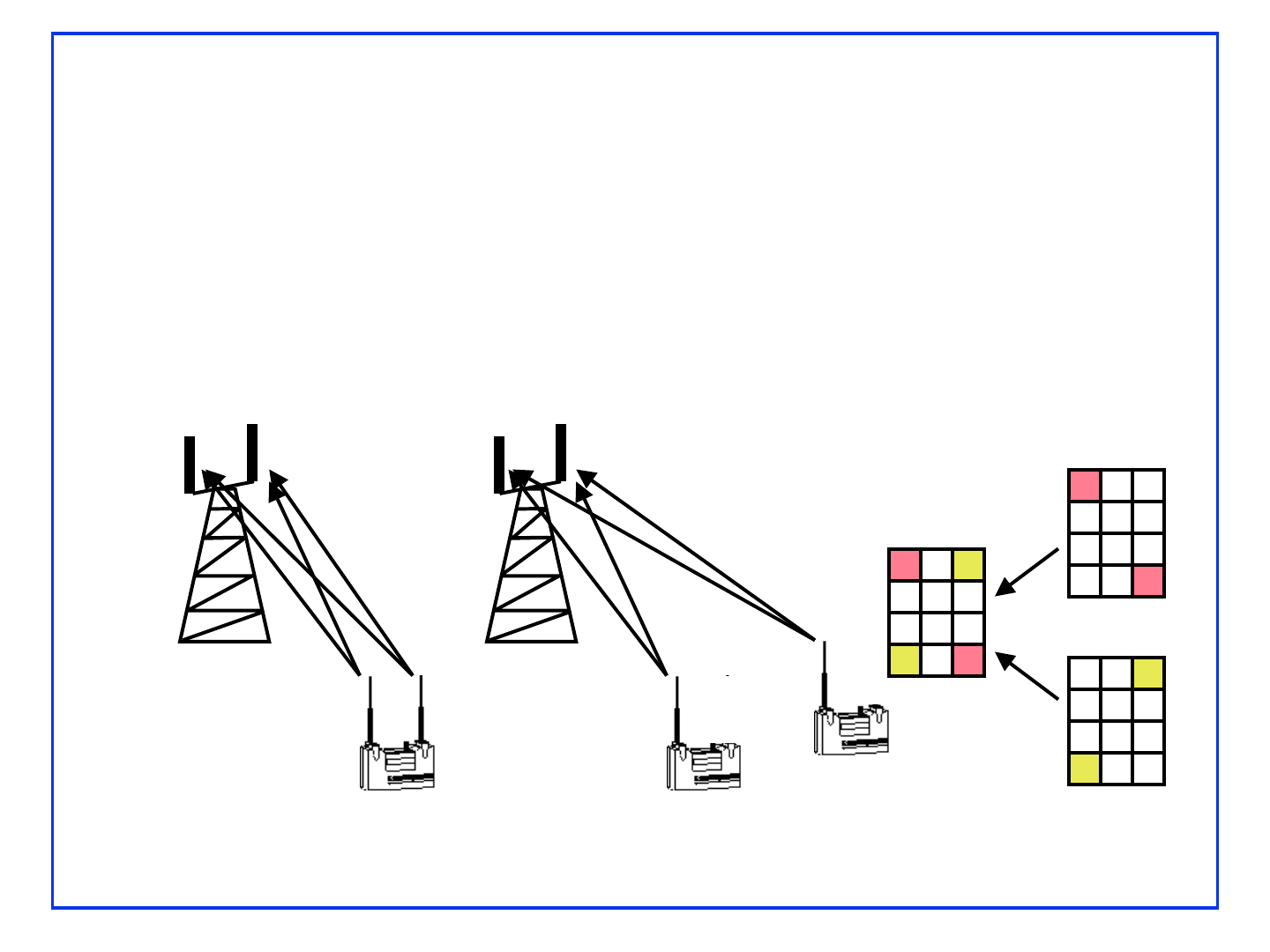
198
©2008 Raj JainWashington University in St. Louis
Cooperative MIMO
Cooperative MIMO
! Two subscribers with one antenna each can transmit at
the same frequency at the same time
! The users do not really need to know each other. They
just use the pilots as indicated by the base.
MIMO
Cooperative MIMO
P P
P P
P x
x P
x P
P x
U1
U2
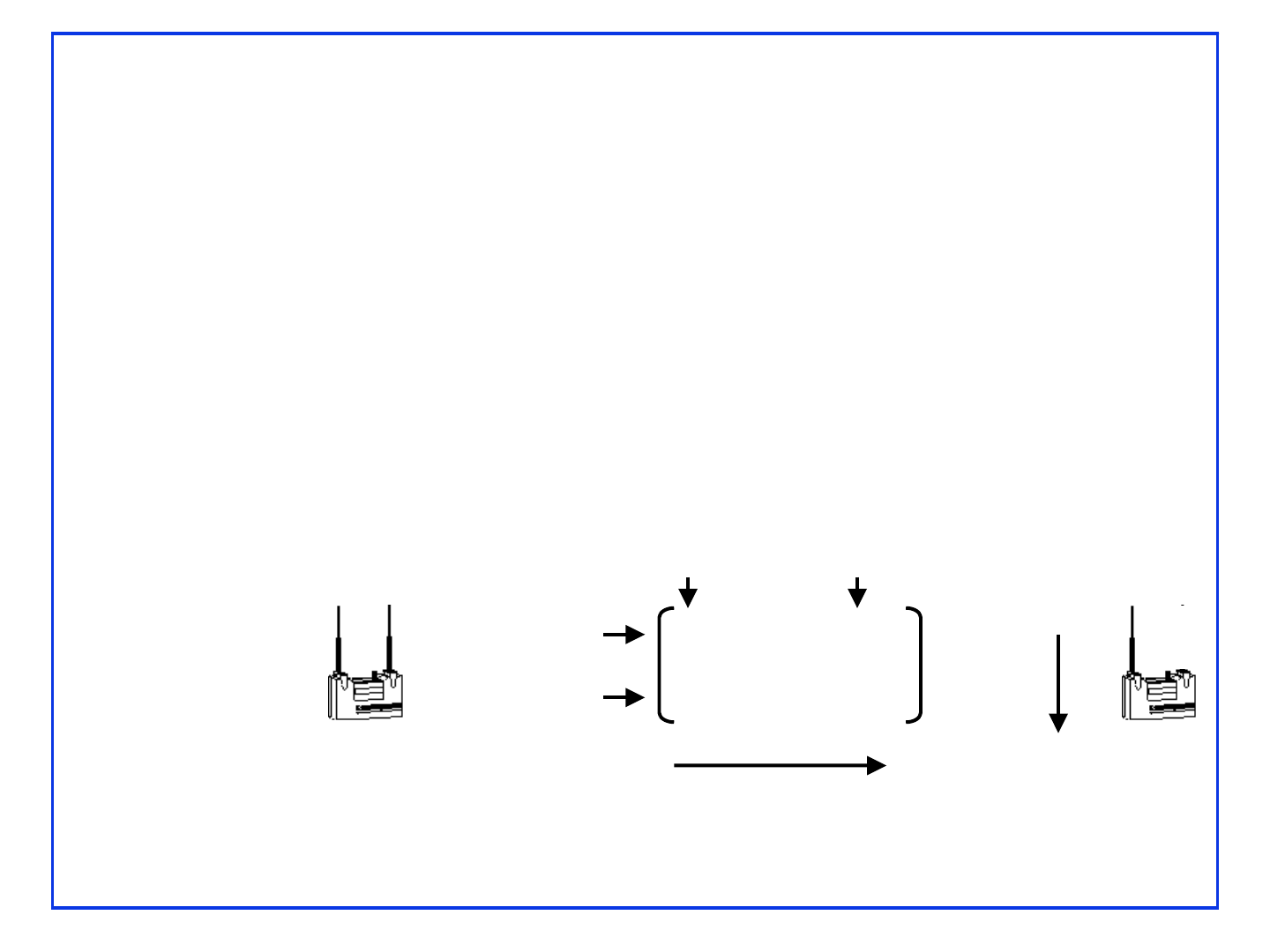
199
©2008 Raj JainWashington University in St. Louis
4. Space Time Block Codes (STBC)
4. Space Time Block Codes (STBC)
! Invented 1998 by Vahid Tarokh.
! Transmit multiple redundant copies from multiple antennas
! Precisely coordinate distribution of symbols in space and time.
! Receiver combines multiple copies of the received signals
optimally to overcome multipath.
! Example: Two antennas:
S1 S2
-S2* S1*
Space
Time
Antenna 1 Antenna 2
Slot 1
Slot 2
S1* is complex conjugate of S1 ⇒ columns are orthogonal

200
©2008 Raj JainWashington University in St. Louis
5. Turbo Codes
5. Turbo Codes
! Shannon Limit:= B log
2
(1+S/N)
! Normal FEC codes: 3dB below the Shannon limit
! Turbo Codes: 0.5dB below Shannon limit
Developed by French coding theorists in 1993
! Use two coders with an interleaver
! Interleaver rearranges bits in a prescribed but irregular manner
Interleaver
Lower
Encoder
Upper
Encoder
Systemic Output x
i
Coded
Output
Interleaved
Input x’
i
Interleave
Parity z’
i
Parity z
i
Parallel
to Serial
Converter
Data Input x
i
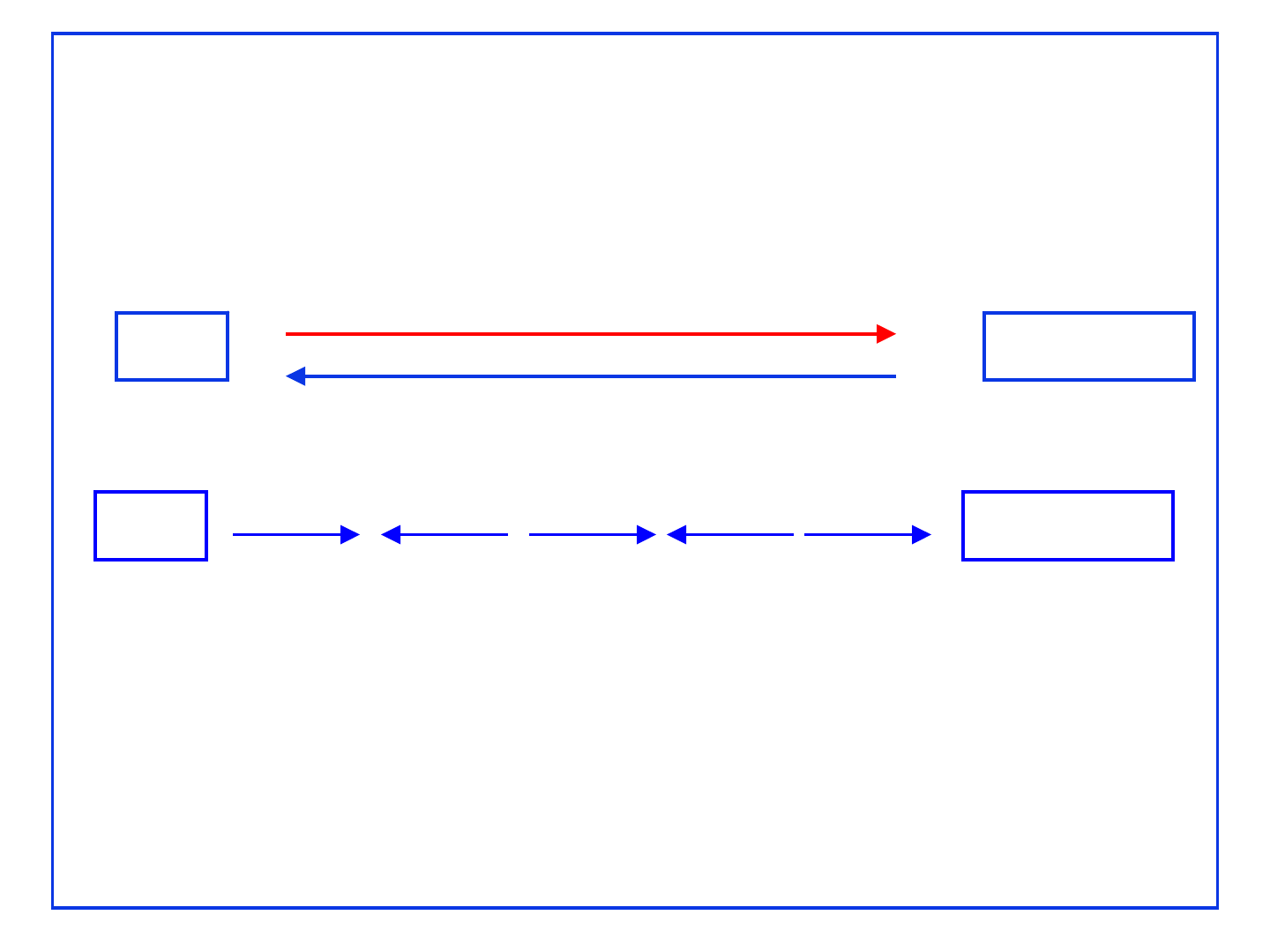
201
©2008 Raj JainWashington University in St. Louis
6. Time Division Duplexing (TDD)
6. Time Division Duplexing (TDD)
! Duplex = Bi-Directional Communication
! Frequency division duplexing (FDD) (Full-Duplex)
! Time division duplex (TDD): Half-duplex
! Most WiMAX deployments will use TDD.
" Allows more flexible sharing of DL/UL data rate
" Does not require paired spectrum
" Easy channel estimation ⇒ Simpler transceiver design
" Con: All neighboring BS should time synchronize
Base Subscriber
Base SubscriberBase Subscriber
Frequency 1
Frequency 2

202
©2008 Raj JainWashington University in St. Louis
7. Software Defined Radio
7. Software Defined Radio
! GSM and CDMA incompatibility ⇒ Need multimode radios
! Military needs to intercept signals of different characteristics
! Radio characteristics (Channel bandwidth, Data rate,
Modulation type) can be changed by software
! Multiband, multi-channel, multi-carrier, multi-mode (AM, FM,
CDMA), Multi-rate (samples per second)
! Generally using Digital Signal Processing (DSP) or field
programmable gate arrays (FPGAs)
! Signal is digitized as close to the antenna as possible
! Speakeasy from Hazeltine and Motorola in mid 80’s was one
the first SDRs. Could handle 2 MHz to 2 GHz.

203
©2008 Raj JainWashington University in St. Louis
Broadband Wireless Access
Broadband Wireless Access
Rural
Areas
Non Line of Sight
Point to Multipoint
Point to Point
Backhaul
Telco Core
Congested
Areas
MTU

205
©2008 Raj JainWashington University in St. Louis
Prior Attempts: LMDS & MMDS
Prior Attempts: LMDS & MMDS
! Local Multipoint Distribution Service (1998)
! 1.3 GHz around 28 GHz band (Ka Band)
28 GHz ⇒ Rain effects
! Multi-channel Multipoint Distribution Services (1999-2001)
! 2.1, 2.5-2.7 GHz Band ⇒ Not affected by rain
Issues: Equipment too expensive, Roof top LoS antennas,
short range (LMDS) or too small capacity (MMDS)
Modem
PoP

206
©2008 Raj JainWashington University in St. Louis
IEEE 802.16: Key Features
IEEE 802.16: Key Features
! Broadband Wireless Access
! Up to 50 km or Up to 70 Mbps.
! Data rate vs Distance trade off w adaptive modulation.
64QAM to BPSK
! Offers non-line of site (NLOS) operation
! 1.5 to 28 MHz channels
! Hundreds of simultaneous sessions per channel
! Both Licensed and license-exempt spectrum
! Centralized scheduler
! QoS for voice, video, T1/E1, and bursty traffic
! Robust Security

207
©2008 Raj JainWashington University in St. Louis
WiMAX
WiMAX
! WiMAX ≠ IEEE 802.16
! Worldwide Interoperability for Microwave Access
! 420+ members including Semiconductor companies,
equipment vendors, integrators, service providers.
Like Wi-Fi Alliance
! Narrows down the list of options in IEEE 802.16
! Plugfests started November 2005
! WiMAX forum lists certified base stations and
subscriber stations from many vendors
! http://www.wimaxforum.org
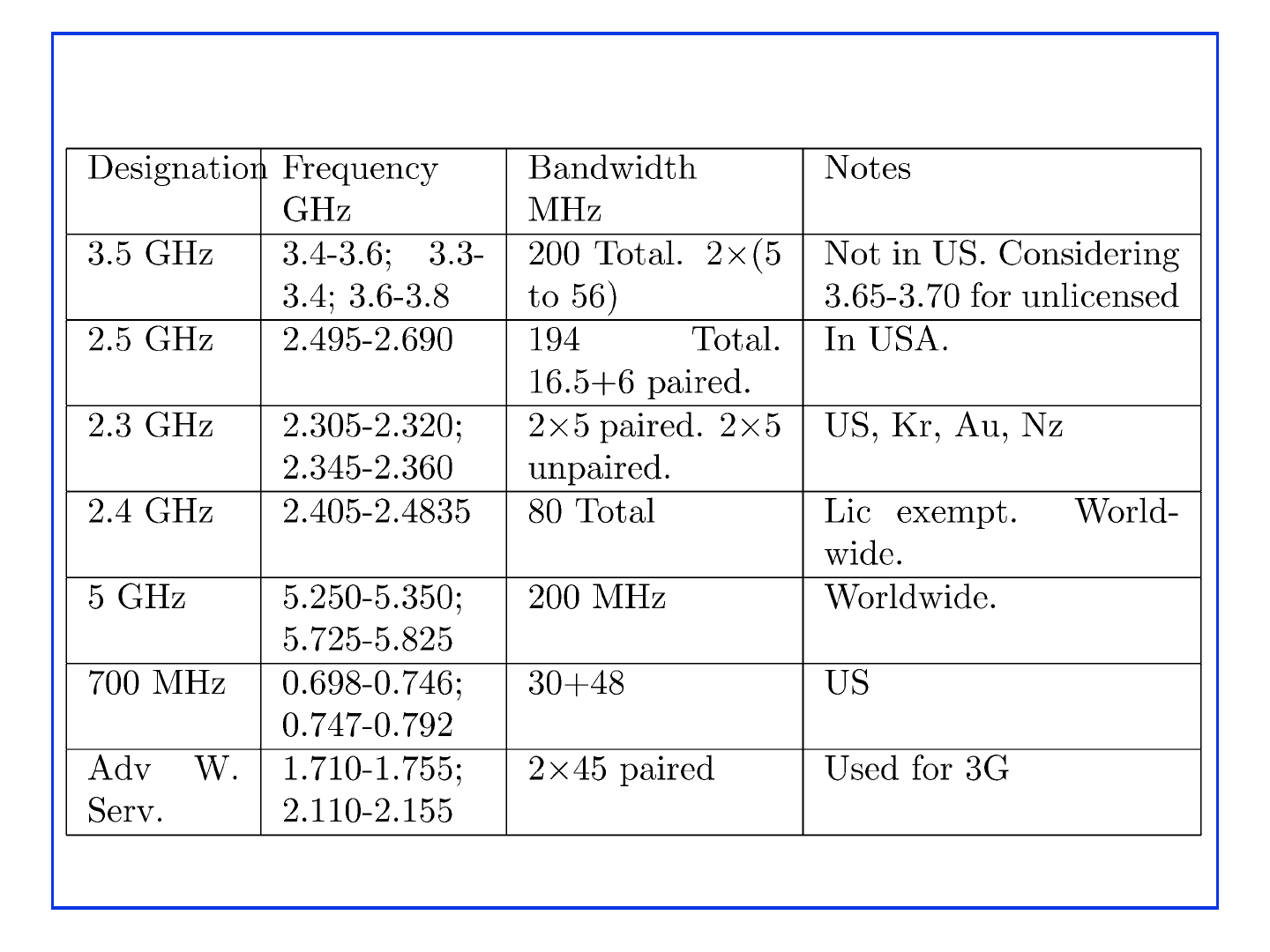
208
©2008 Raj JainWashington University in St. Louis
Spectrum Options
Spectrum Options

209
©2008 Raj JainWashington University in St. Louis
Status of WiMAX
Status of WiMAX
! WiBro service started in Korea in June 2006
! More than 200 operators have announced plans for WiMAX
! About half are already trialing or have launched pre-WiMAX
! Two dozen networks in trial or deployed in APAC
! 15 in Western Europe
! Sprint-Nextel in 2.3/2.5 GHz with equipment supplied by Intel,
Motorola, Samsung, Nokia, and LG
! Initial deployment in Washington DC and Chicago
! Intel will sample a multi-band WiMAX/WiFi chipset in late
2007
! M-Taiwan

210
©2008 Raj JainWashington University in St. Louis
Sample WiMAX Subscriber Stations
Sample WiMAX Subscriber Stations
Alvarion Airspan Axxcelera Siemens
Aperto Redline SR Telecom Telsima

211
©2008 Raj JainWashington University in St. Louis
Sample WiMAX Base Stations
Sample WiMAX Base Stations
Axxcelara Alverian
Airspan Aperto
Redline
SR Telecom
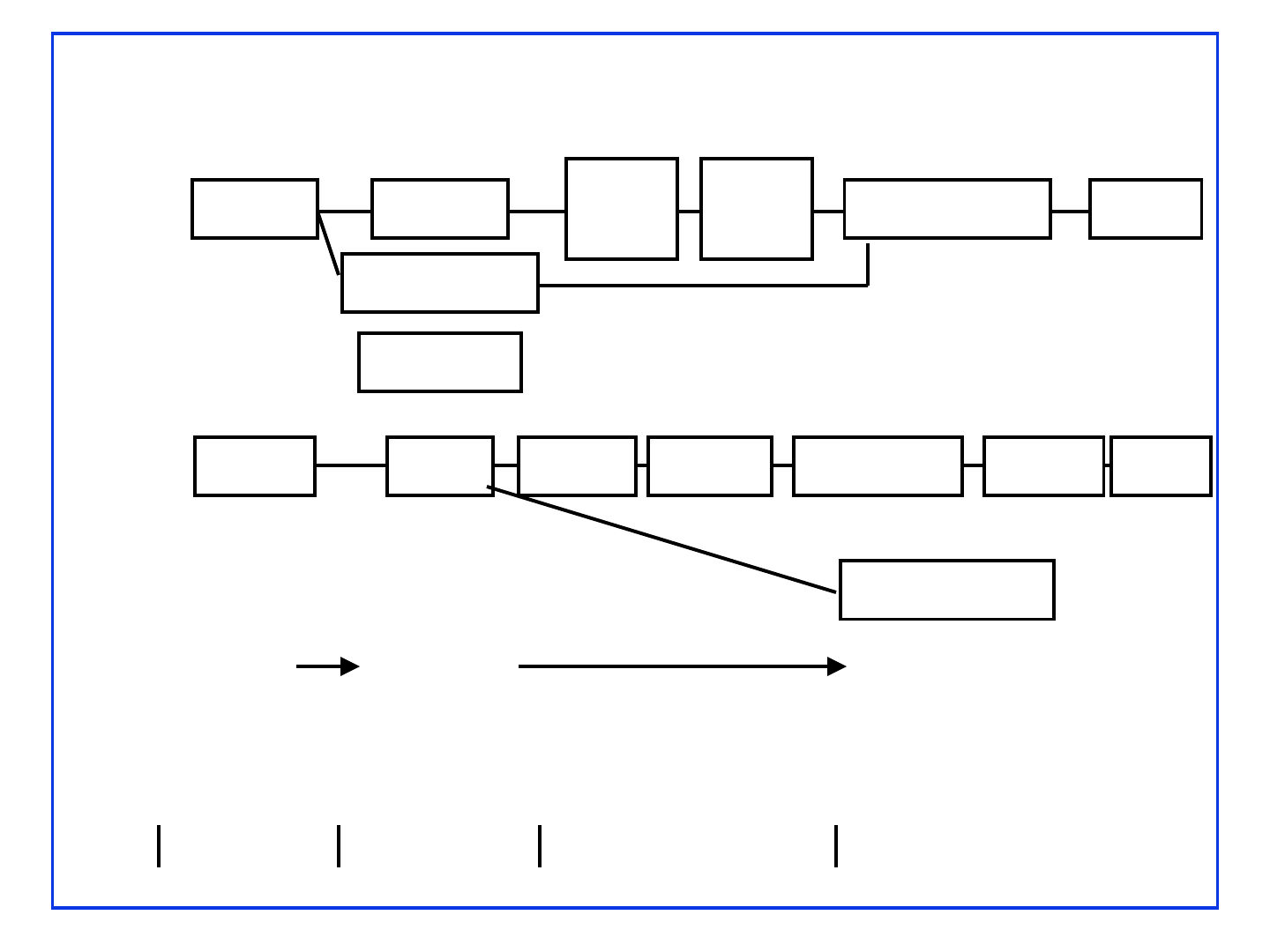
212
©2008 Raj JainWashington University in St. Louis
Cellular Telephony Generations
Cellular Telephony Generations
1G 2G 2.5G 3G
NA
Europe
China
D-AMPS
NA-TDMA
Analog
FDMA
Digital
TDMA
CDMA
CDMA
Voice Voice+DataVoice
AMPS CDMA
GSMTACS WCDMA
CDMA2000
1xEV
-DO
1xEV
-DV
GPRS EDGE HSPA
TD-SCDMA
3GPP2
3GPP
LTE
UMB

213
©2008 Raj JainWashington University in St. Louis
3G Technologies: Bit Rates
3G Technologies: Bit Rates
Rel-5
HSDPA
Rel-6
HSUPA
Rel-7
HSPA+
Phase 1
Rel-8
HSPA+
Phase 2
EV-DO
Rev C
UMB
EV-DO
Rev B
EV-DO
Rev A
CDMA2000
1xEV-DO
Rel-99
WCDMA
CDMA2000
1x
LTE
WCMDA Path
(5 MHz FDD
Channel)
CDMA2000 Path (1.25 MH FDD Channel)
2000 2001 2002 2003 2004 2005 2006 2007 2008 2009 2010
Source: www.cdg.org
D:153k
U:153k
D:2.4M
U:153k
D:3.1M
U:1.8M
D:3.1-73M
U:1.8-27M
1.25-20 MHz
Requirement
D:70-200M
U:30-45M
1.25-20 MHz
Requirement: D:100M, U:50M, 1.25-20 MHz
Target
D:40M
U:10M
D:7.2M
U:5.8M
D:1.8-7.2M
U:384k
D:384k
U:384k
Note: WiMAX is also a 3G Technology now.

214
©2008 Raj JainWashington University in St. Louis
OFDMA+
MIMO+SDMA
3G Technologies: PHY
3G Technologies: PHY
Rel-5
HSDPA
Rel-6
HSUPA
Rel-7
HSPA+
Phase 1
Rel-8
HSPA+
Phase 2
EV-DO
Rev C
UMB
EV-DO
Rev B
EV-DO
Rev A
CDMA2000
1xEV-DO
Rel-99
WCDMA
CDMA2000
1x
LTE
WCMDA Path
(5 MHz FDD
Channel)
CDMA2000 Path (1.25 MH FDD Channel)
2000 2001 2002 2003 2004 2005 2006 2007 2008 2009 2010
Source: www.cdg.org
OFDMA+MIMO+SDMA
CDMA CDMA/TDM
CDMA CDMA/TDM
MIMO
OFDM
For multicasting

215
©2008 Raj JainWashington University in St. Louis
3G Technologies (Cont)
3G Technologies (Cont)
! All data rates are for FDD
⇒ 20MHz = 2×20 MHz
! On the downlink, LTE uses a modified version of
OFDMA called DFT-Spread OFDMA, also known as
single-carrier FDMA.
! UMB may utilize a combination of OFDMA and
CDMA or OFDM and CDMA
! Data rates depend upon level of mobility

216
©2008 Raj JainWashington University in St. Louis
HSDPA
HSDPA
! High-Speed Downlink Packet Access for W-CDMA
! Improved spectral efficiency for downlink ⇒ Asymmetric
! Up to 10 Mbps in theory, 2Mbps+ in practice
! Announced by Siemens, then by Ericsson, Alcatel, Fujitsu
! Adaptive modulation and coding (AMC)
! Multi-code (multiple CDMA channels) transmission
! Fast physical layer (L1) hybrid ARQ (H-ARQ)
! Packet scheduler moved from the radio network controller
(RNC) to the Node-B (base station)
⇒ advanced packet scheduling techniques
⇒ user data rate can be adjusted to match the instantaneous
radio channel conditions.

219
©2008 Raj JainWashington University in St. Louis
4G: IMT
4G: IMT
-
-
Advanced
Advanced
! International Mobile Telecommunications –
Advanced or 4G
! Wireless broadband access to be standardized around
2010 and deployed around 2015
! 1 Gbps for nomadic/fixed and 100 Mbps for high
mobility (150 km/h)
! Requirements will be set in 2008
! Set of 4G technologies will be selected by 2010
Ref: ITU-R M.1645, “Framework and overall objectives of the future development of
IMT-2000 and systems beyond IMT-2000” (2003)

220
©2008 Raj JainWashington University in St. Louis
IEEE 802.16m
IEEE 802.16m
! Peak data rate:
" Downlink (BS->MS) > 6.5 bps/Hz,
Uplink (MS->BS) > 2.8 bps/Hz
After PHY overhead
" 20 MHz => 130 Mbps
! Mobility: Optimized for 0-15 km/h, marginal degradation 15-
120 km/h, maintain connection 120-350 km/h
! 3 dB improvement in link budget over 16e
! Optimized for cell sizes of up to 5km. Graceful degradation in
spectral efficiency for 5-30km. Functional for 30-100 km.
Ref: Draft IEEE 802.16m requirements, June 8, 2007,
http://ieee802.org/16/tgm/docs/80216m-07_002r2.pdf

221
©2008 Raj JainWashington University in St. Louis
700 MHz
700 MHz
! February 19, 2009: TV vacates 700-MHz
! FCC just approved 700 MHz for broadband access
! 108 MHz total available
" 60 MHz available by Auction in January 16, 2008
" 24 MHz for Public Safety
" 24 MHz already owned by Access Spectrum, Aloa Partners,
Pegasus Comm, Qualcomm,Verizon, DirecTV, Echostar,
Google, Intel, Skype, and Yahoo!
! Open Access: Open applications, Open devices, Open services,
and open networks
! White spaces: Unused spectrum between 54 and 698 MHz.
(Channel 2 through 51)

222
©2008 Raj JainWashington University in St. Louis
Effect of Frequency
Effect of Frequency
! Higher Frequencies have higher attenuation,
e.g., 18 GHz has 20 dB/m more than 1.8 GHz
! Higher frequencies need smaller antenna
Antenna > Wavelength/2, 800 MHz ⇒ 6”
! Higher frequencies are affected more by weather
Higher than 10 GHz affected by rainfall
60 GHz affected by absorption of oxygen molecules
! Higher frequencies have more bandwidth and higher data rate
! Higher frequencies allow more frequency reuse
They attenuate close to cell boundaries. Low frequencies
propagate far.
! Mobility ⇒ Below 10 GHz

223
©2008 Raj JainWashington University in St. Louis
Summary
Summary
1. Key developments in wireless are:
OFDMA,
2. WiMAX Broadband Wireless Access
3. Cellular Telephony 3G is all CDMA
based
4. All 4G technologies will be OFDMA
based

224
©2008 Raj JainWashington University in St. Louis
Optical
Optical
Networking
Networking
Raj Jain
Professor of Computer Science and Engineering
Washington University in Saint Louis
Saint Louis, MO, USA
http://www.cse.wustl.edu/~jain/

226
©2008 Raj JainWashington University in St. Louis
1. Recent DWDM Records
2. OEO vs OOO Switches
3. More Wavelengths
4. Ultra-Long Haul Transmission
5. Passive Optical Networks
6. IP over DWDM: MPλS, GMPLS
7. Free Space Optical Comm
8. Optical Packet Switching
Overview
Overview

227
©2008 Raj JainWashington University in St. Louis
Sparse and Dense WDM
Sparse and Dense WDM
! 10Mbps Ethernet (10Base-F) uses 850 nm
! 100 Mbps Ethernet (100Base-FX) + FDDI use 1310 nm
! Some telecommunication lines use 1550 nm
! WDM: 850nm + 1310nm or 1310nm + 1550nm
! Dense ⇒ Closely spaced ≈ 0.1 - 2 nm separation
! Coarse = 2 to 25 nm = 4 to 12 λ’s
! Wide = Different Wavebands

228
©2008 Raj JainWashington University in St. Louis
Recent DWDM Records
Recent DWDM Records
! 32λ× 5 Gbps to 9300 km (1998)
! 16λ× 10 Gbps to 6000 km (NTT’96)
! 160λ× 20 Gbps (NEC’00)
! 128λ× 40 Gbps to 300 km (Alcatel’00)
! 64λ× 40 Gbps to 4000 km (Lucent’02)
! 19λ× 160 Gbps (NTT’99)
! 7λ× 200 Gbps (NTT’97)
! 1λ×1200 Gbps to 70 km using TDM (NTT’00)
! 1022 Wavelengths on one fiber (Lucent’99)
Potential: 58 THz = 50 Tbps on 10,000 λ’s
Ref: IEEE J. on Selected Topics in Quantum Electronics, 11/2000.
Distance
Bit
rate
λ

229
©2008 Raj JainWashington University in St. Louis
Attenuation and Dispersion
Attenuation and Dispersion
! Pulses become shorter and wider as they travel
through the fiber

230
©2008 Raj JainWashington University in St. Louis
ω
1
-Δ, ω
1
, ω
2
, ω
2
+Δ
Δ= ω
2
- ω
1
Four
Four
-
-
Wave Mixing
Wave Mixing
! If two signals travel in the same phase for a long time,
new signals are generated.

231
©2008 Raj JainWashington University in St. Louis
Core Optical Networks
Core Optical Networks
! Higher Speed: 10 Gbps to 40 Gbps to 160 Gbps
! Longer Distances: 600 km to 6000 km
! More Wavelengths: 16 λ’s to 160 λ’s
! All-optical Switching: OOO vs OEO Switching

233
©2008 Raj JainWashington University in St. Louis
OEO vs OOO Switches
OEO vs OOO Switches
! OEO:
" Requires knowing data rate and format, e.g., 10
Gbps SONET
" Can multiplex lower rate signals
" Cost/space/power increases linearly with data rate
! OOO:
" Data rate and format independent
⇒ Data rate easily upgraded
" Sub-wavelength mux/demux difficult
" Cost/space/power relatively independent of rate
" Can switch multiple ckts per port (waveband)
" Issues: Wavelength conversion, monitoring
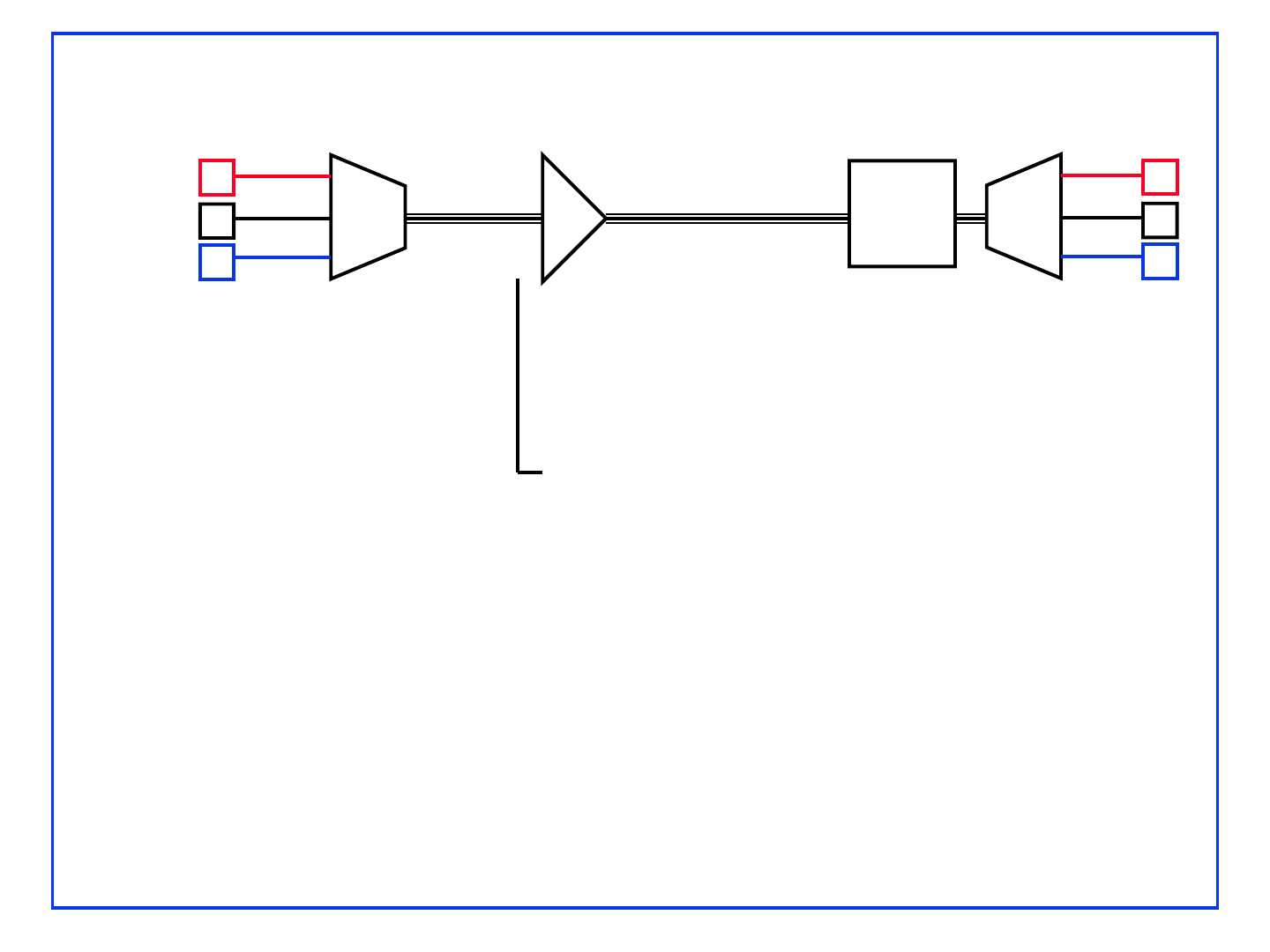
234
©2008 Raj JainWashington University in St. Louis
40 Gbps
40 Gbps
! Need all new optical and electronic components
! Non-linearity's reduce distance by square of rate.
! Deployment may be 2-3 years away
! Development is underway. To avoid 10 Gbps mistake.
! Cost goal: 2.5×10 Gbps
Transmitter
Sources
Modulators
Wavelockers
Mux/Demux
Filters
Interleavers
Amplifier
Gain Equalizers
Performance Monitors
Switching
ADM
Receivers
Detectors
Fiber
Dispersion compensators
PMD compensators

235
©2008 Raj JainWashington University in St. Louis
More Wavelengths
More Wavelengths
! C-Band (1535-1560nm), 1.6 nm (200 GHz) ⇒ 16 λ’s
! Three ways to increase # of wavelengths:
1. Narrower Spacing: 100, 50, 25, 12.5 GHz
Spacing limited by data rate. Cross-talk (FWM)
Tight frequency management: Wavelength monitors,
lockers, adaptive filters
2. Multi-band: C+L+S Band
3. Polarization Muxing
O E S C L U
1530146013601260
1565
1625
1675
910770

236
©2008 Raj JainWashington University in St. Louis
More Wavelengths (Cont)
More Wavelengths (Cont)
! More wavelengths ⇒ More Power
⇒ Fibers with large effective area
⇒ Tighter control of non-linearity's
⇒ Adaptive tracking and reduction of polarization
mode dispersion (PMD)

237
©2008 Raj JainWashington University in St. Louis
Ultra
Ultra
-
-
Long Haul Transmission
Long Haul Transmission
1. Strong out-of-band Forward Error Correction (FEC)
Changes regeneration interval from 80 km to 300km
Increases bit rate from 40 to 43 Gbps
2. Dispersion Management: Adaptive compensation
3. More Power: Non-linearity's ⇒ RZ coding
Fiber with large effective area
Adaptive PMD compensation
4. Distributed Raman Amplification:
Less Noise than EDFA
5. Noise resistant coding: 3 Hz/bit by Optimight

238
©2008 Raj JainWashington University in St. Louis
Services
ONU
FTTH
FTTB
FTTC
FTTCab
xDSL
Optical
Line
Terminal
ONU
NT
NT
FTTx
FTTC:Fiber To The Curb
FTTCab :Fiber To The Cabinet
FTTH :Fiber To The Home
FTTB :Fiber To The Building
Internet/
Ethernet
Leased Line
T1/E1
Frame/Cell
Relay
Telephone
Interactive
Video
Twisted Pair
ONT
ONT
Access: Fiber To The X(
Access: Fiber To The X(
FTTx
FTTx
)
)

239
©2008 Raj JainWashington University in St. Louis
Passive Optical Networks
Passive Optical Networks
! A single fiber is used to support multiple customers
! No active equipment in the path ⇒ Highly reliable
! Both upstream and downstream traffic on ONE fiber
(1490nm down, 1310nm up). OLT assigned time slots upstream.
! Optical Line Terminal (OLT) in central office
! Optical Network Terminal (ONT) on customer premises
Optical Network Unit (ONU) at intermediate points w xDSL
ONT
OLT
ONU

240
©2008 Raj JainWashington University in St. Louis
Why PONs?
Why PONs?
1. Passive ⇒ No active electronics or regenerators in distribution
network ⇒ Very reliable. Easy to maintain. Reduced truck
rolls. Shorter installation times. Reduced power expences.
⇒ Lower OpEx.
2. Single fiber for bi-directional communication
⇒ Reduced cabling and plant cost ⇒ Lower CapEx
3. A single fiber is shared among 16 to 64 customers
⇒ Relieves fiber congestion
4. Single CO equipment is shared among 16 to 64 customers
2N fibers + 2N transceivers vs 1 fiber + (N+1) transceivers
⇒ Significantly lower CapEx.
5. Scalable ⇒ New customers can be added. Exisiting Customer
bandwidth can be changed
6. Multi-service: Voice, T1/E1, SONET/SDH, ATM, Video,
Ethernet. Most pt-pt networks are single service.
Useful if customers are clustered ⇒ Asia (Korea, China)

241
©2008 Raj JainWashington University in St. Louis
Types of PONs
Types of PONs
! APON: Initial name for ATM based PON spec.
Designed by Full Service Access Network (FSAN) group
! BPON: Broadband PON standard specified in ITU G.983.1
thru G.893.7 = APON renamed
" 155 or 622 Mbps downstream, 155 upstream
! EPON: Ethernet based PON draft being designed by IEEE
802.3ah.
" 1000 Mbps down and 1000 Mbps up.
! GPON: Gigabit PON standard specified in ITU G.984.1 and
G.984.2
" 1244 and 2488 Mbps Down, 155/622/1244/2488 up

243
©2008 Raj JainWashington University in St. Louis
IP over DWDM (Past)
IP over DWDM (Past)
SONET
ADM
SONET
ADM
ATM
Switch
ATM
Switch
IP
Router
IP
Router
IP
Router
DWDM
TE
ATM
Switch
SONET
ADM

245
©2008 Raj JainWashington University in St. Louis
IP over DWDM (Future)
IP over DWDM (Future)
IP
Router
IP
Router
IP
Router
DWDM
TE
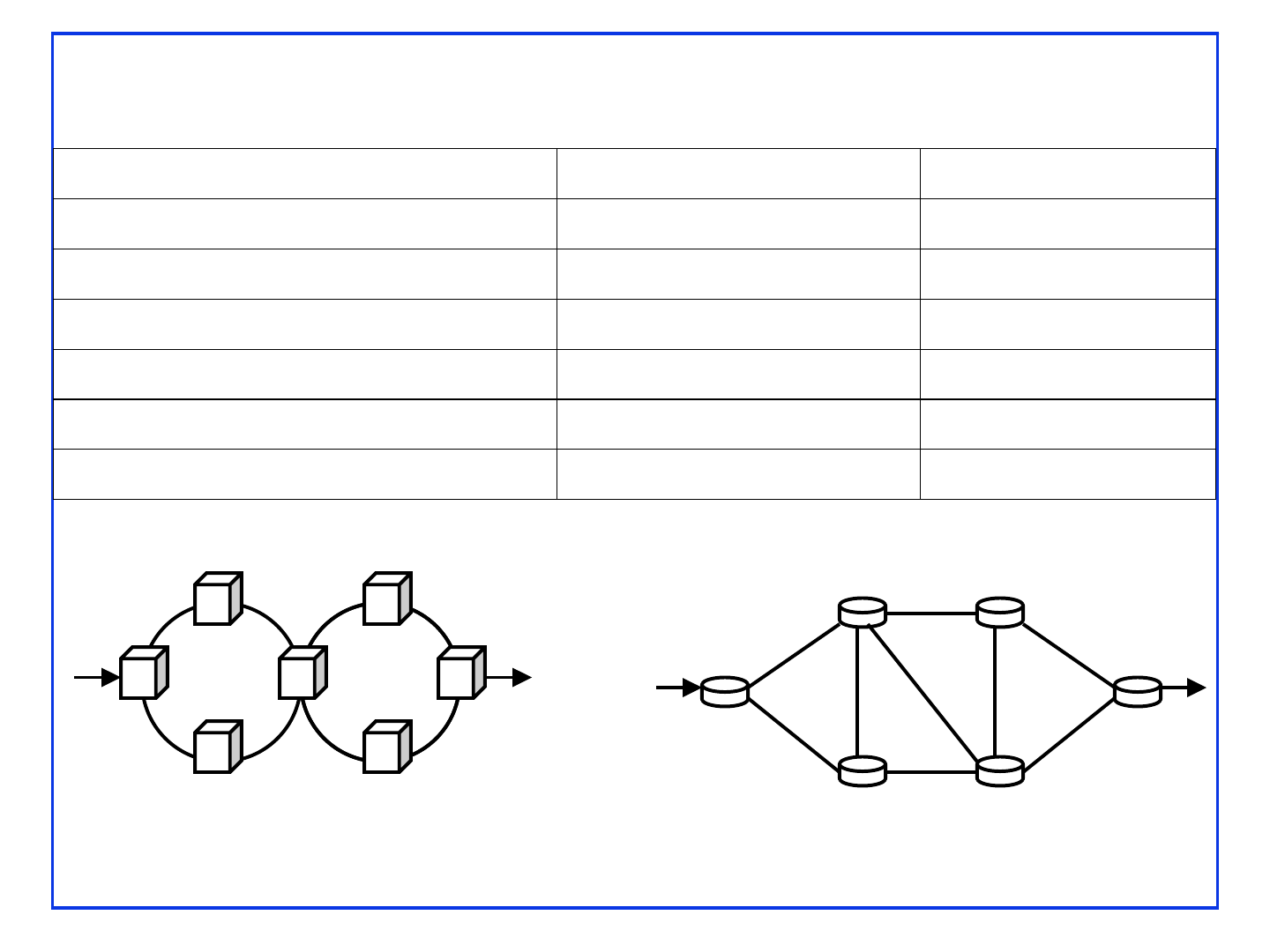
246
©2008 Raj JainWashington University in St. Louis
Telecom vs Data Networks
Telecom vs Data Networks
Telecom Networks Data Networks
Topology Discovery Manual Automatic
Path Determination Manual Automatic
Circuit Provisioning Manual No Circuits
Transport & Control Planes Separate Mixed
User and Provider Trust No Yes
Protection Static using Rings No Protection

247
©2008 Raj JainWashington University in St. Louis
IP over DWDM Issues
IP over DWDM Issues
1. Data and Control plane separation
2. Circuits
3. Signaling
4. Addressing
5. Protection and Restoration

248
©2008 Raj JainWashington University in St. Louis
Signaling
Data
Today:
Tomorrow:
Routing
Messages
Control and Data Plane Separation
Control and Data Plane Separation
! Separate control and data channels
! IP routing protocols (OSPF and IS-IS) are being
extended

249
©2008 Raj JainWashington University in St. Louis
IP
IP
-
-
Based Control Plane
Based Control Plane
! Control is by IP packets (electronic).
Data can be any kind of packets (IPX, ATM cells).
⇒ MPLS
PSC
PSC
IP
IP
PSC
IPIP
PSC
IP
Data Plane
Control Plane
PSC = Packet Switch Capable Nodes

250
©2008 Raj JainWashington University in St. Louis
MP
MP
λ
λ
S
S
! Control is by IP packets (electronic).
Data plane consists of wavelength circuits
⇒ Multiprotocol Lambda Switching (October 1999)
LSC
LSC
LSC
LSC
Data Plane
LSC = Lambda Switch Capable Nodes
= Optical Cross Connects = OXC
IP
IP
IPIP
IP
Control Plane

251
©2008 Raj JainWashington University in St. Louis
IP
IP
IPIP
IP
Data Plane
Control Plane
GMPLS
GMPLS
! Data Plane = Wavelengths, Fibers, SONET Frames, Packets
(October 2000)
! Two separate routes: Data route and control route

252
©2008 Raj JainWashington University in St. Louis
GMPLS: Layered View
GMPLS: Layered View
IP Control Plane
Packet Switching
SONET/SDH/OTN
Wavelength Switching
Fiber Switching

253
©2008 Raj JainWashington University in St. Louis
GMPLS: Hierarchical View
GMPLS: Hierarchical View
! Packets over SONET over Wavelengths over Fibers
! Packet switching regions, TDM regions, Wavelength
switching regions, fiber switching regions
! Allows data plane connections between SONET
ADMs, PXCs. FSCs, in addition to routers
SONET
TDM
PXC
SONET
TDM
Router Router
PXC
LSC
PSC
TDM
PXC
FSC

254
©2008 Raj JainWashington University in St. Louis
MPLS vs GMPLS
MPLS vs GMPLS
XC XC
Issue MPLS GMPLS
Data & Control Plane Same channel Separate
Types of Nodes
and labels
Packet
Switching
PSC, TDM, LSC, FSC, …
Bandwidth Continuous
Discrete: OC-n,
λ
’s, ..
# of Parallel Links Small 100-1000’s
Port IP Address One per port Unnumbered
Fault Detection In-band Out-of-band or In-Band
λ
’s, ..

255
©2008 Raj JainWashington University in St. Louis
Free Space Optical Comm
Free Space Optical Comm
! Uses WDM in open air
! Sample Product:
Lucent WaveStar OpticAir: 4×2.5Gbps to 5 km
Available March'00.
! EDFA = Erbium Doped Fiber Amplifier
Receiver
Laser
Source
EDFA
Telescope

256
©2008 Raj JainWashington University in St. Louis
Free Space Optical Comm
Free Space Optical Comm
! No FCC Licensing required
! Immunity from interference
! Easy installation
⇒ Unlimited bandwidth, Easy Upgrade
! Transportable upon service termination or move
! Affected by weather (fog, rain)
⇒ Need lower speed Microwave backup
! Example Products: Optical Crossing Optibridge 2500
2.5Gbps to 2km, Texas Instruments TALP1135
Chipset for 10/100 Mbps up to 50m

257
©2008 Raj JainWashington University in St. Louis
Header
Recog-
nition
Optical Packet Switching
Optical Packet Switching
! Header Recognition: Lower bit rate or different λ
! Switching
! Buffering: Delay lines, Dispersive fiber
Switch
Payload
Header
λ
4
λ
3
λ
2
λ
1
Header
Recog-
nition
Header
Recog-
nition
Delay Line
Delay Line

258
©2008 Raj JainWashington University in St. Louis
! O/O/O switches are bit rate and data format
independent
! PONs provide a scalable, upgradeable, cost
effective solution.
! High speed routers
⇒ IP directly over DWDM
! Separation of control and data plane
⇒ IP-Based control plane
! Transport Plane = Packets ⇒ MPLS
Transport Plane = Wavelengths
⇒ MPλS
Transport Plane =
λ, SONET, Packets ⇒
GMPLS
Summary
Summary

259
©2008 Raj JainWashington University in St. Louis
References
References
! Detailed references in
http://www.cse.wustl.edu/~jain/refs/opt_refs.htm
! Recommended books on optical networking,
http://www.cse.wustl.edu/~jain/refs/opt_book.htm
! Optical Networking and DWDM,
http://www.cse.wustl.edu/~jain/cis788-
99/dwdm/index.html
! IP over Optical: A summary of issues, (internet draft)
http://www.cse.wustl.edu/~jain/ietf/issues.html
! Lightreading, http://www.lightreading.com
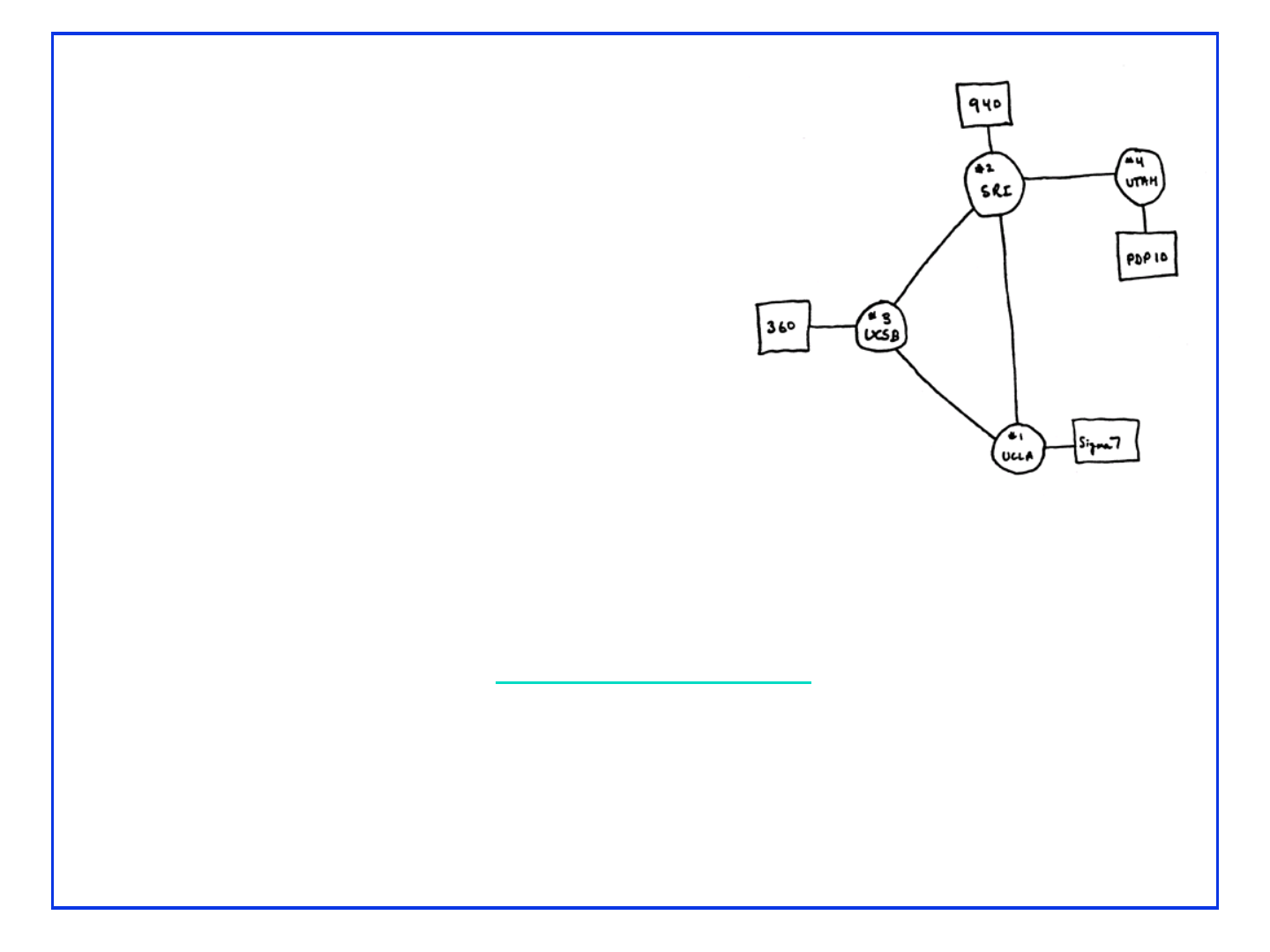
260
©2008 Raj JainWashington University in St. Louis
Raj Jain
Washington University in Saint Louis
Saint Louis, MO 63130
Internet 3.0:
Internet 3.0:
The Next Generation Internet
The Next Generation Internet

261
©2008 Raj JainWashington University in St. Louis
Overview
Overview
1. What is Internet 3.0?
2. Why should you keep on the top of Internet 3.0?
3. What are we missing in the current Internet?
4. Our Proposed Architecture for Internet 3.0
Acknowledgement: This research is sponsored by a grant from
Intel Research Council.

263
©2008 Raj JainWashington University in St. Louis
Internet 3.0
Internet 3.0
! US National Science Foundation started a large research and
infrastructure program on next generation Internet
" Testbed: “Global Environment for Networking Innovations”
(GENI)
" Architecture: “Future Internet Design” (FIND).
! Q: How would you design Internet today? Clean slate design.
! Ref: http://www.nsf.gov/cise/cns/geni/
! Most of the networking researchers will be working on
GENI/FIND for the coming years
! Internet 3.0 is the name of the Washington University project
on the next generation Internet
! Named by me along the lines of “Web 2.0”
! Internet 3.0 is more intuitive then GENI/FIND

264
©2008 Raj JainWashington University in St. Louis
Internet Generations
Internet Generations
! Internet 1.0 (1969 – 1989) – Research project
" RFC1 is dated April 1969.
" ARPA project started a few years earlier.
" IP, TCP, UDP
" Mostly researchers
" Industry was busy with proprietary protocols: SNA, DECnet,
AppleTalk, XNS
! Internet 2.0 (1989 – Present) – Commerce ⇒ new requirements
" Security RFC1108 in 1989
" NSFnet became commercial
" Inter-domain routing: OSPF, BGP,
" IP Multicasting
" Address Shortage IPv6
" Congestion Control, Quality of Service,…

265
©2008 Raj JainWashington University in St. Louis
Ten Problems with Current Internet
Ten Problems with Current Internet
1. Designed for research
⇒ Trusted systems
Used for Commerce
⇒ Untrusted systems
2. Control, management, and Data
path are intermixed ⇒ security
issues
3. Difficult to represent
organizational, administrative
hierarchies and relationships.
Perimeter based.
Trusted
Un-trusted

266
©2008 Raj JainWashington University in St. Louis
Problems (cont)
Problems (cont)
4. Identity and location in one
(IP Address)
Makes mobility complex.
5. Location independent addressing
⇒ Most services require
nearest server.
⇒ Also, Mobility requires location
6. No representation for real end system:
the human.

267
©2008 Raj JainWashington University in St. Louis
Problems (cont)
Problems (cont)
7. Assumes live and awake end-systems
Does not allow communication while
sleeping.
Many energy conscious systems today
sleep.
8. Single-Computer to single-computer
communication
⇒ Numerous patches
needed for communication with globally
distributed systems and services.
9. Symmetric Protocols
⇒ No difference between a PDA and a
Google server.
Google

268
©2008 Raj JainWashington University in St. Louis
Problems (Cont)
Problems (Cont)
10. Stateless ⇒ Can’t remember a flow
⇒ QoS difficult.
QoS is generally for a flow and not
for one packet

269
©2008 Raj JainWashington University in St. Louis
Our Proposed Solution: Internet 3.0
Our Proposed Solution: Internet 3.0
! Take the best of what is already known
" Wireless Networks, Optical networks, …
" Transport systems: Airplane, automobile, …
" Communication: Wired Phone, Cellular nets,…
! Develop a consistent general purpose, evolvable
architecture that can be customized by implementers,
service providers, and users

270
©2008 Raj JainWashington University in St. Louis
Names, IDs, Addresses
Names, IDs, Addresses
! Address changes as you move, ID and Names remain the same.
! Examples:
" Names: Company names, DNS names (microsoft.com)
" IDs: Cell phone numbers, 800-numbers, Ethernet addresses,
Skype ID, VOIP Phone number
" Addresses: Wired phone numbers, IP addresses
Name: John Smith
ID: 012-34-5678
Address:
1234 Main Street
Big City, MO 12345
USA
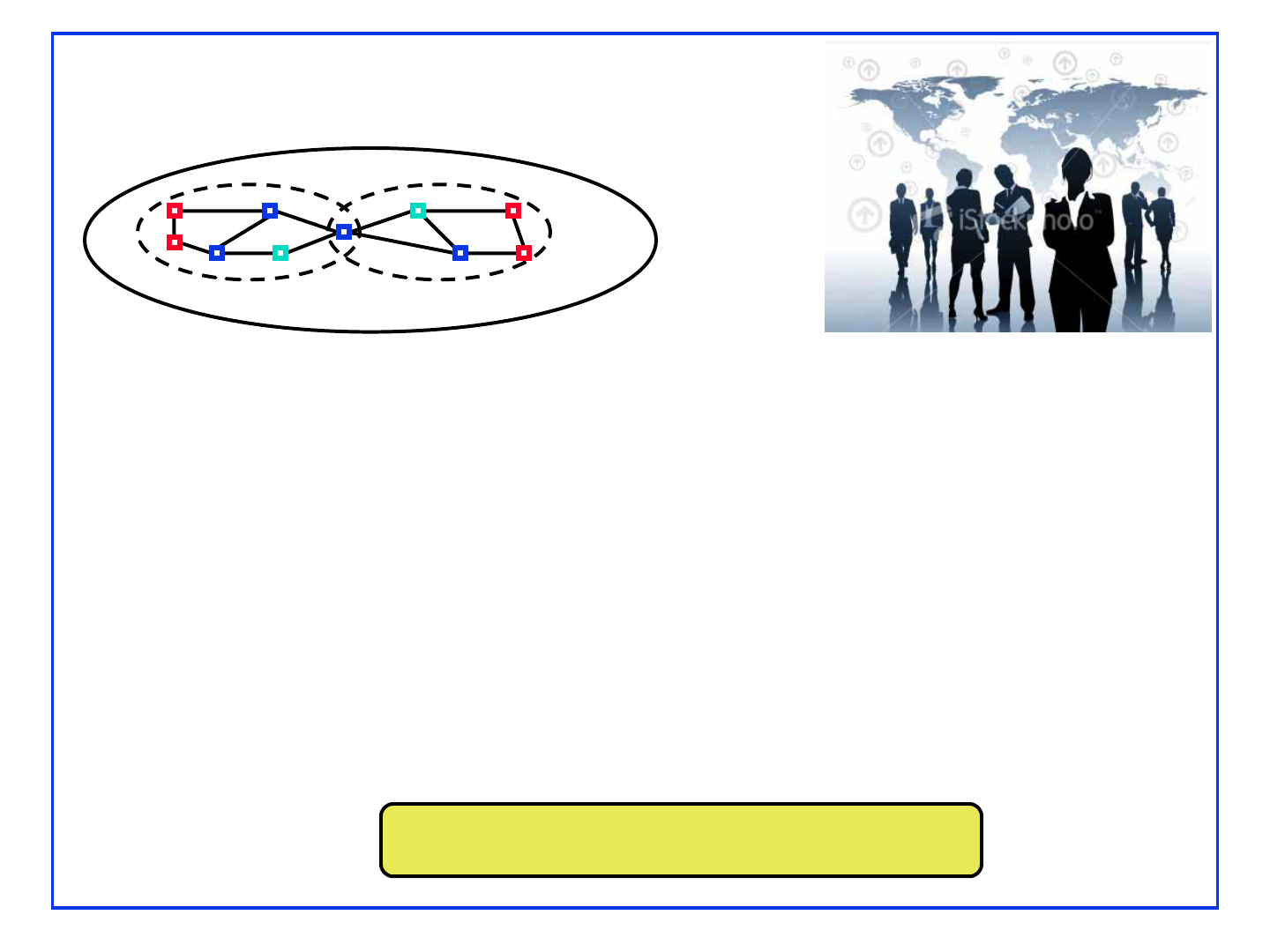
271
©2008 Raj JainWashington University in St. Louis
Realms
Realms
! Object names and Ids are defined within a realm
! A realm is a logical grouping of objects under an administrative
domain
! The Administrative domain may be based on Trust Relationships
! A realm represents an organization
" Realm managers set policies for communications
" Realm members can share services.
" Objects are generally members of multiple realms
! Realm Boundaries: Organizational, Governmental, ISP, P2P,…
Realm = Administrative Group

272
©2008 Raj JainWashington University in St. Louis
Physical
Physical
vs
vs
Logical Connectivity
Logical Connectivity
! Physically and logically connected:
All computers in my lab
= Private Network,
Firewalled Network
! Physically disconnected but logically
connected:
My home and office computers
! Physically connected but logically
disconnected: Passengers on a plane,
Neighbors, Conference attendees sharing a
wireless network, A visitor
Physical connectivity ≠ Trust

273
©2008 Raj JainWashington University in St. Louis
Id
Id
-
-
Locator Split Architecture (MILSA)
Locator Split Architecture (MILSA)
! Realm managers:
" Resolve current location for a given host-ID
" Enforce policies related to authentication, authorization,
privacy
" Allow mobility, multi-homing, location privacy
" Similar to several other proposals
! Ref: Our Globecom 2008 paper [2]
User
Host
Location
Realm
Manager
Data
Host
Location
Realm
Manager

274
©2008 Raj JainWashington University in St. Louis
Server and Gatekeeper Objects
Server and Gatekeeper Objects
! Each realm has a set of server objects, e.g., forwarding,
authentication, encryption, storage, transformation, …
! Some objects have built-in servers, e.g., an “enterprise router”
may have forwarding, encryption, authentication services.
! Other objects rely on the servers in their realm
! Authentication servers (AS) add their signatures to packets and
verify signatures of received packets..
! Storage servers store packets while the object may be sleeping
and may optionally aggregate/compress/transform data.
Could wake up objects.
! Objects can appoint proxies for any function(s)
! Gatekeepers enforce policies: Security, traffic, QoS
Servers allow simple energy efficient end devices

275
©2008 Raj JainWashington University in St. Louis
User
User
-
-
Host
Host
-
-
and Data Centric Models
and Data Centric Models
! All discussion so far assumed host-centric communication
" Host mobility and multihoming
" Policies, services, and trust are related to hosts
! User Centric View:
" Bob wants to watch a movie
" Starts it on his media server
" Continues on his iPod during commute to work
" Movie exists on many servers
" Bob may get it from different servers at different times or
multiple servers at the same time
! Can we just give addresses to users and treat them as hosts?
No!
⇒ Policy Oriented Naming Architecture (PONA)

276
©2008 Raj JainWashington University in St. Louis
Policy Oriented Naming Architecture
Policy Oriented Naming Architecture
! Both Users and data need hosts for communication
! Data is easily replicable. All copies are equally good.
! Users, Hosts, Infrastructure, Data belong to different realms
(organizations).
! Each object has to follow its organizational policies.
User
Host
Location
User RM
Host RM
Location RM
Data
Host
Location
Data RM
Host RM
Location RM
RM = Realm Manager
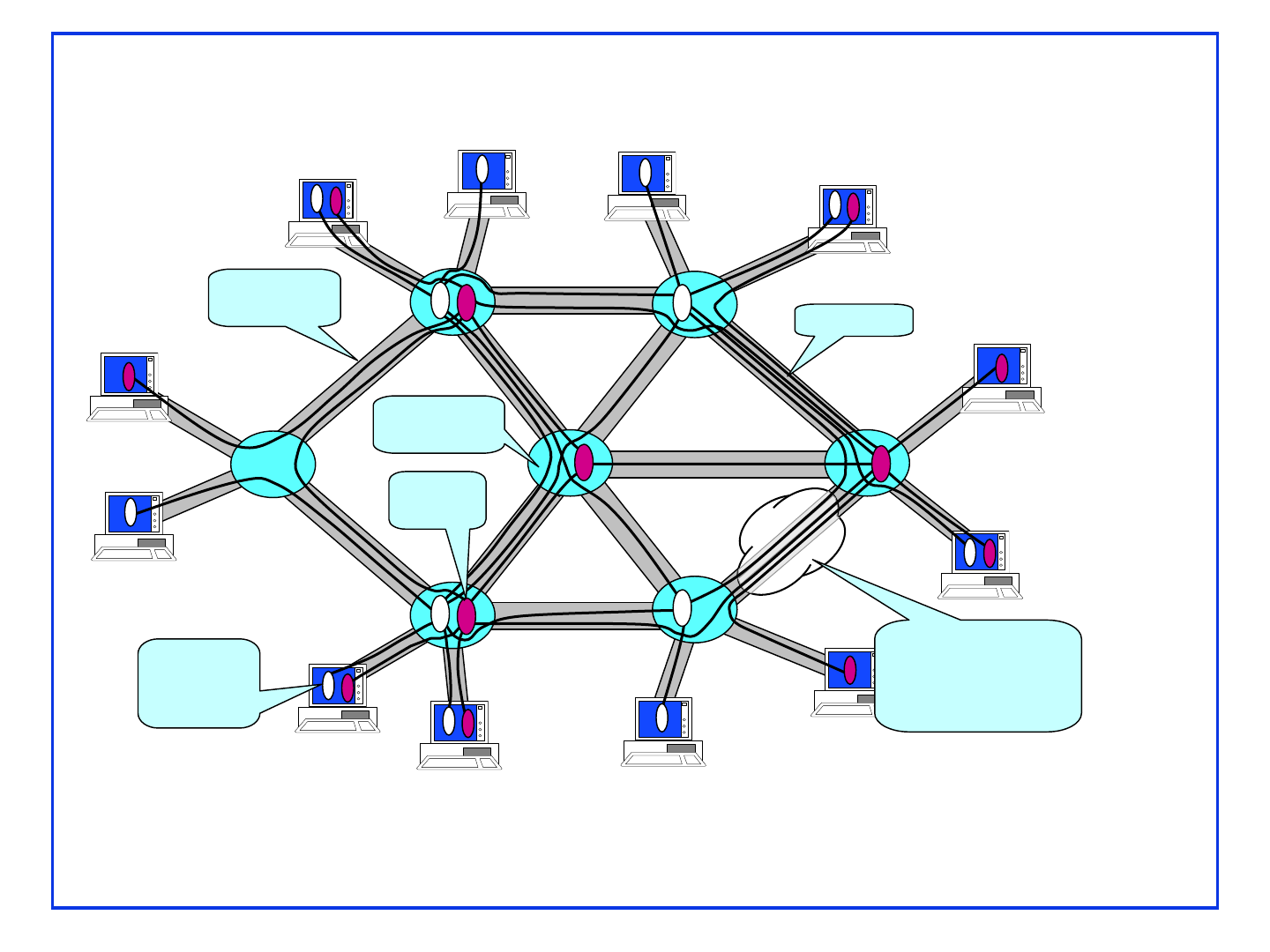
277
©2008 Raj JainWashington University in St. Louis
Virtualizable Network Concept
Virtualizable Network Concept
substrate
router
substrate
link
metalink
metanet
protocol
stack
substrate links
may run over
Ethernet, IP,
MPLS, . . .
meta
router
Ref: T. Anderson, L. Peterson, S. Shenker, J. Turner, "Overcoming the Internet Impasse
through Virtualization," Computer, April 2005, pp. 34 – 41.
Slide taken from Jon Turner’s presentation at Cisco Routing Research Symposium

278
©2008 Raj JainWashington University in St. Louis
Realm Virtualization
Realm Virtualization
! Old: Virtual networks on a common infrastructure
! New: Virtual user realms on virtual host realms on a group of
infrastructure realms. 3-level hierarchy not 2-level. Multiple
organizations at each level.
Infrastructure
Realm 1
Host Realm 1
User Realm 1 User Realm n
Host Realm n
Infrastructure
Realm n

279
©2008 Raj JainWashington University in St. Louis
Internet 1.0 vs. Internet 3.0
Internet 1.0 vs. Internet 3.0
Information Retrieval, Distributed
Computing, Distributed Storage,
Data diffusion
Email and Telnet Applications10.
Packets, Circuits, Wavelengths, Electrical
Power Lines, …
Packets Switching units9.
Sharing and Isolation
⇒ Critical infrastructure
Sharing ⇒ Interference,
QoS Issues
Sharing8.
Hierarchy of ownerships, administrations,
communities
No concept of ownership Ownership7.
Commerce ⇒ No Trust
Map to organizational structure
Research ⇒ Trusted Systems
Design Goal6.
Unequal: PDA vs. big server
⇒ Asymmetric
Communication between equals
⇒ Symmetric
Protocol Symmetry5.
Globally distributed systemsSingle computers End Systems4.
Multi-systems user
⇒ Personal comm. systems
Multi-user systems
⇒ Machine to machine comm.
Computer-Human
Relationship
3.
Mostly mobile objectsMostly stationary computersMobility2.
Green ⇒ Mostly Off
Always-on Energy Efficiency1.
Internet 3.0Internet 1.0Feature

280
©2008 Raj JainWashington University in St. Louis
Summary
Summary
1. Internet 3.0 is the next generation of Internet.
2. It must be secure, allow mobility, and be energy efficient.
3. Must be designed for commerce
⇒ Must represent multi-organizational structure and policies
4. Moving from host centric view to user-data centric view
⇒ Important to represent users and data objects
5. Users, Hosts, and infrastructures belong to different realms
(organizations). Users/data/hosts should be able to move
freely without interrupting a network connection.

281
©2008 Raj JainWashington University in St. Louis
References
References
1. Jain, R., “Internet 3.0: Ten Problems with Current Internet
Architecture and Solutions for the Next Generation,” in
Proceedings of Military Communications Conference
(MILCOM 2006), Washington, DC, October 23-25, 2006,
http://www.cse.wustl.edu/~jain/papers/gina.htm
2. Subharthi Paul, Raj Jain, Jianli Pan, and Mic Bowman, “A
Vision of the Next Generation Internet: A Policy Oriented
View,” British Computer Society Conference on Visions of
Computer Science, Sep 2008,
http://www.cse.wustl.edu/~jain/papers/pona.htm
3. Jianli Pan, Subharthi Paul, Raj Jain, and Mic Bowman,
“MILSA: A Mobility and Multihoming Supporting Identifier-
Locator Split Architecture for Naming in the Next Generation
Internet,,” Globecom 2008, Nov 2008,
http://www.cse.wustl.edu/~jain/papers/milsa.htm
